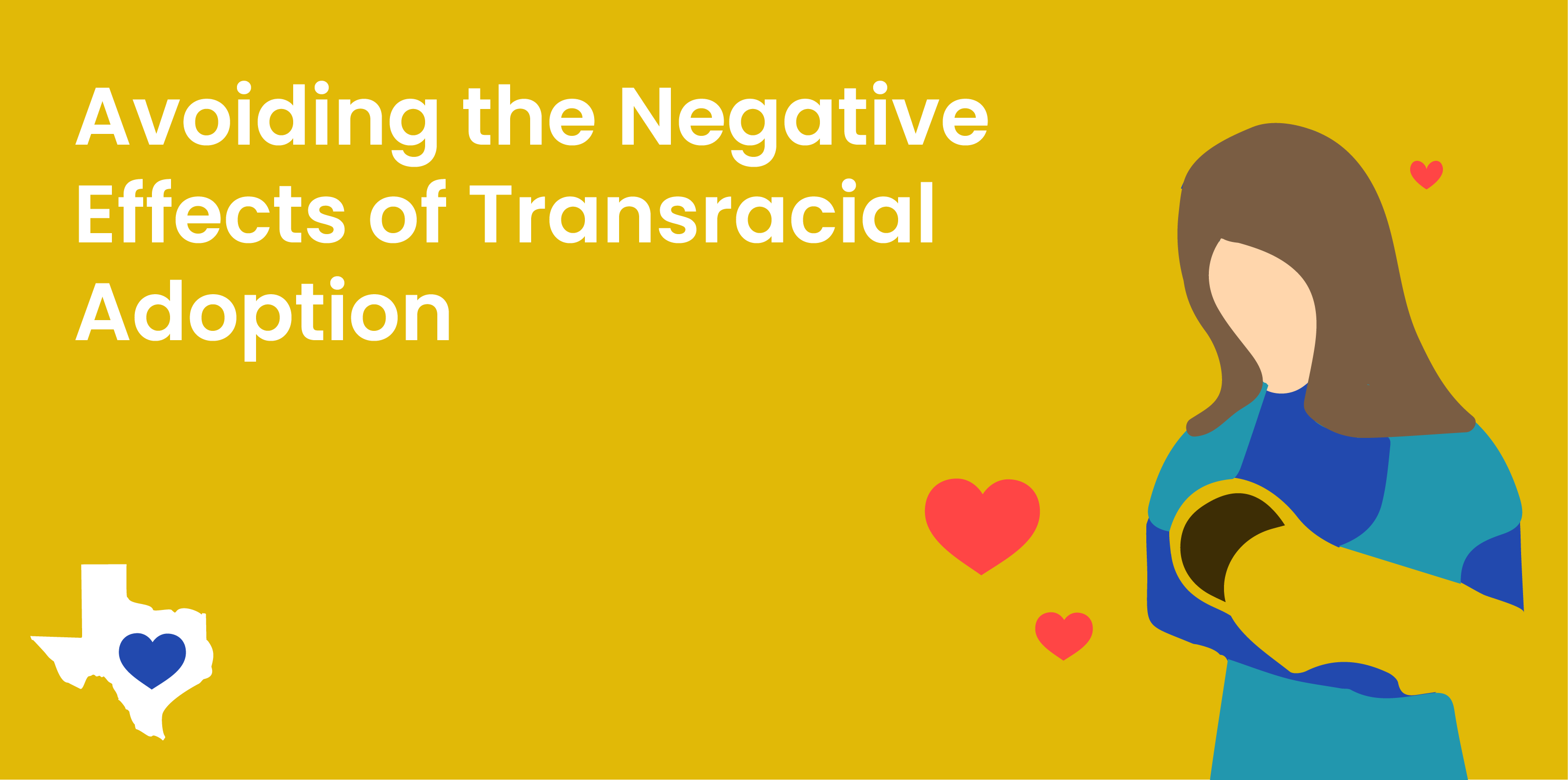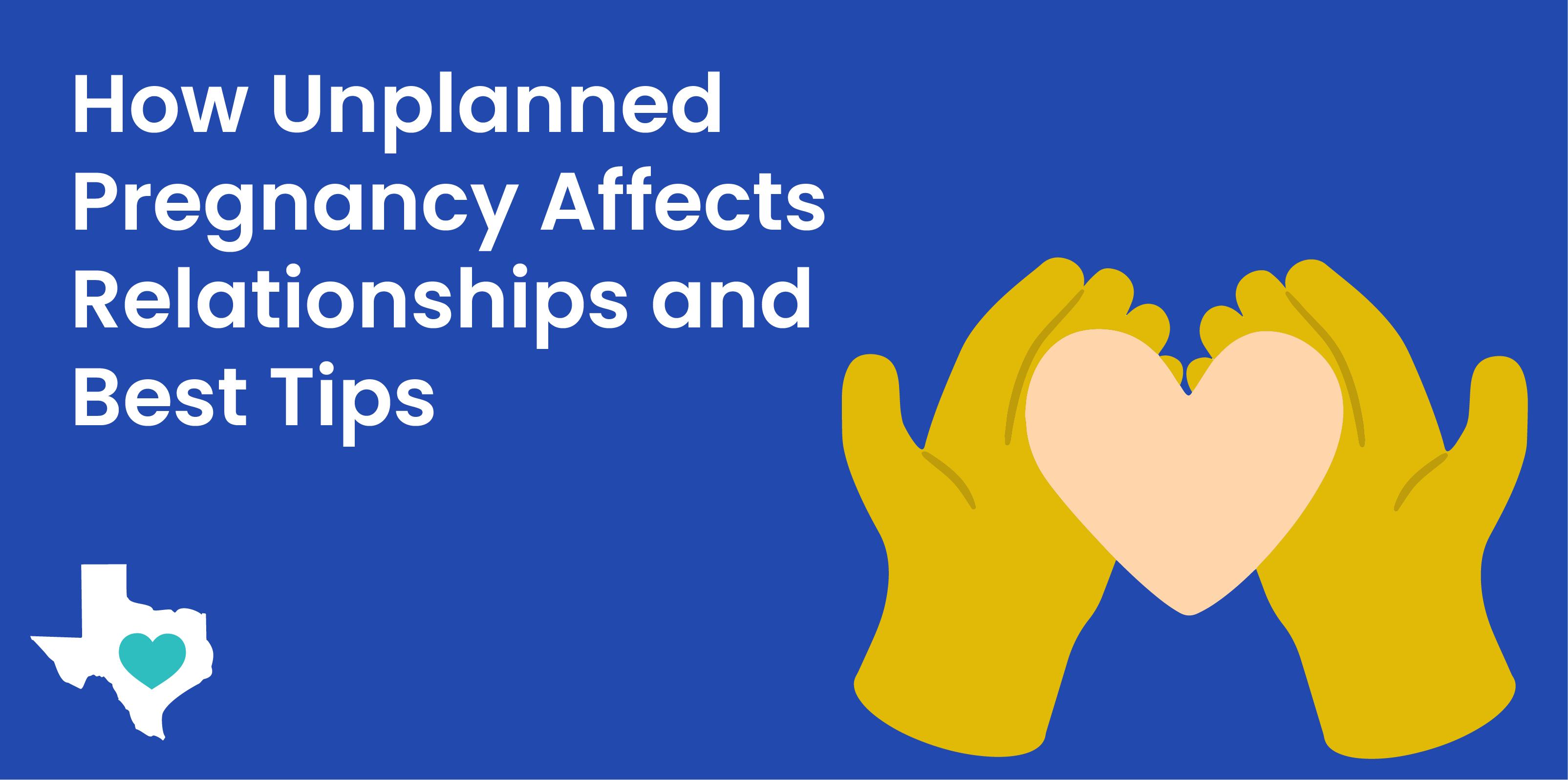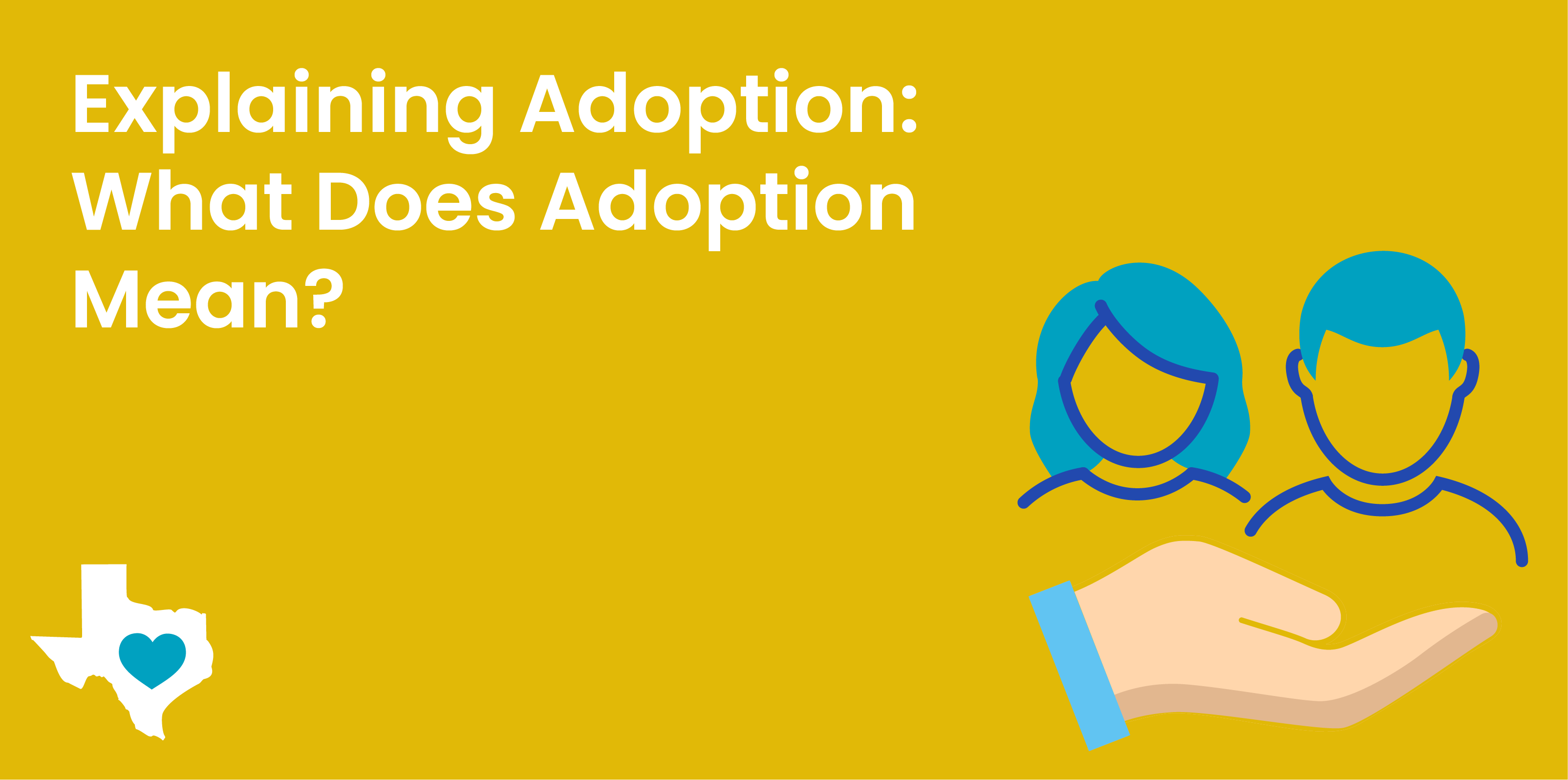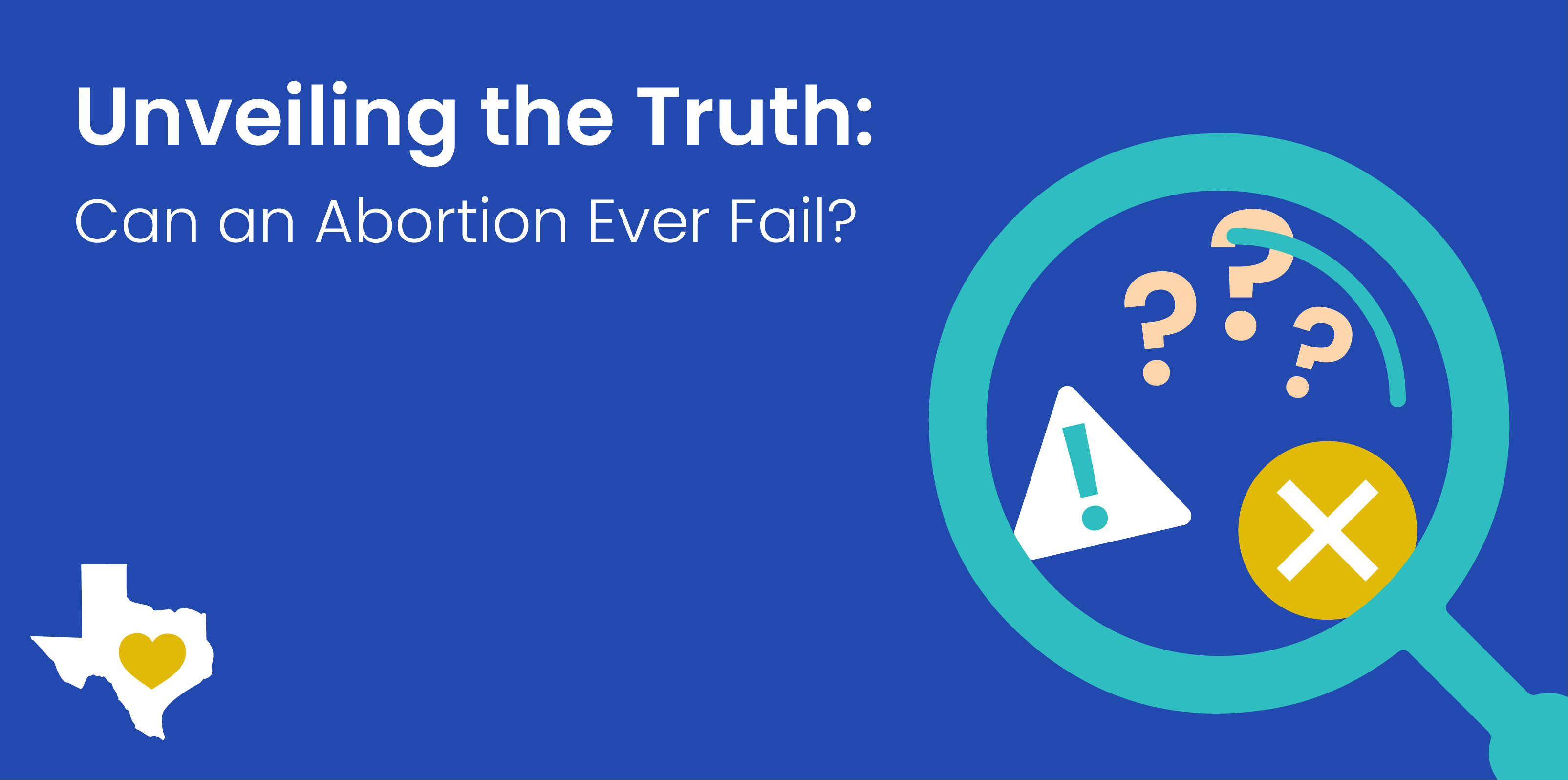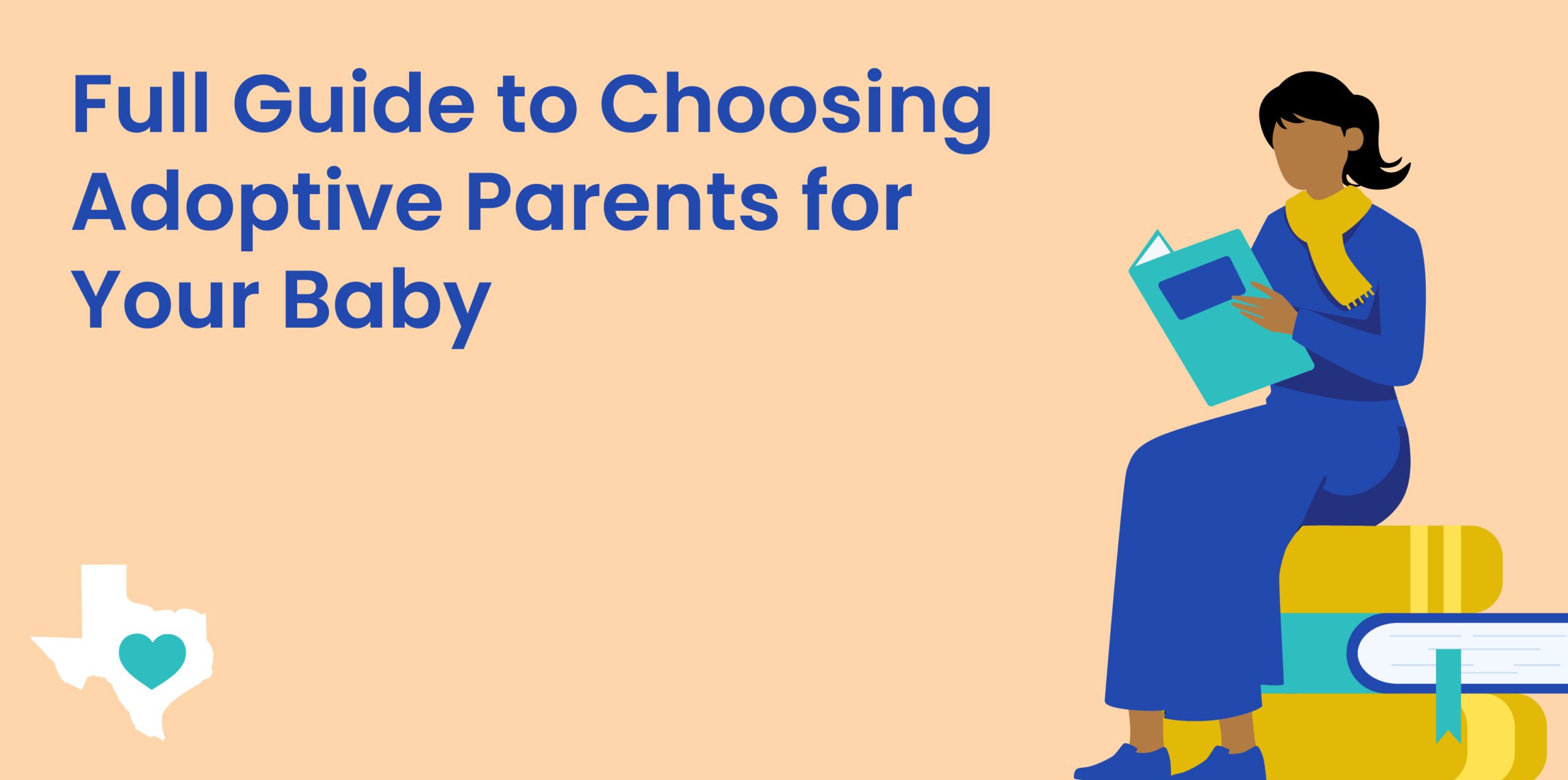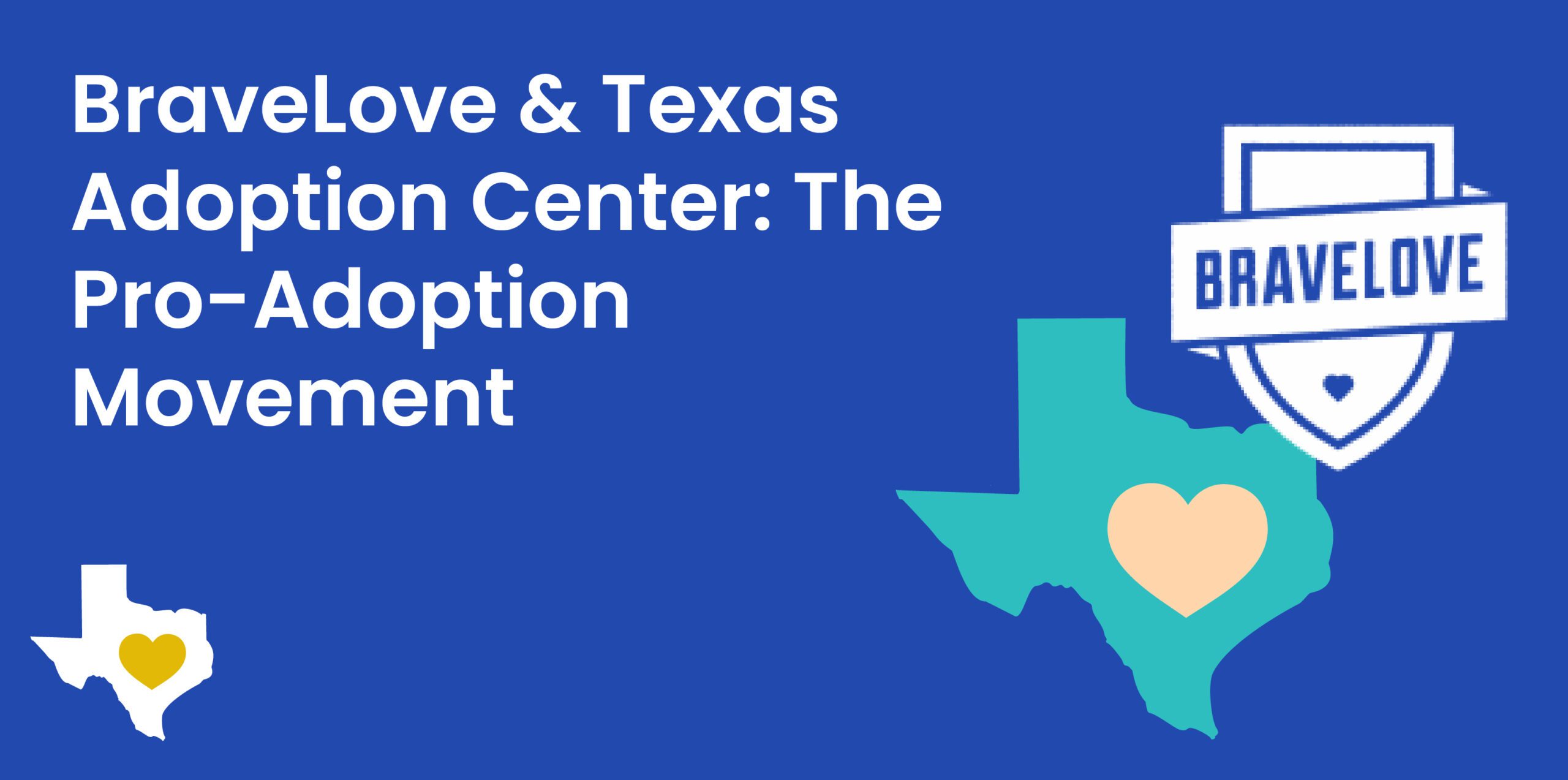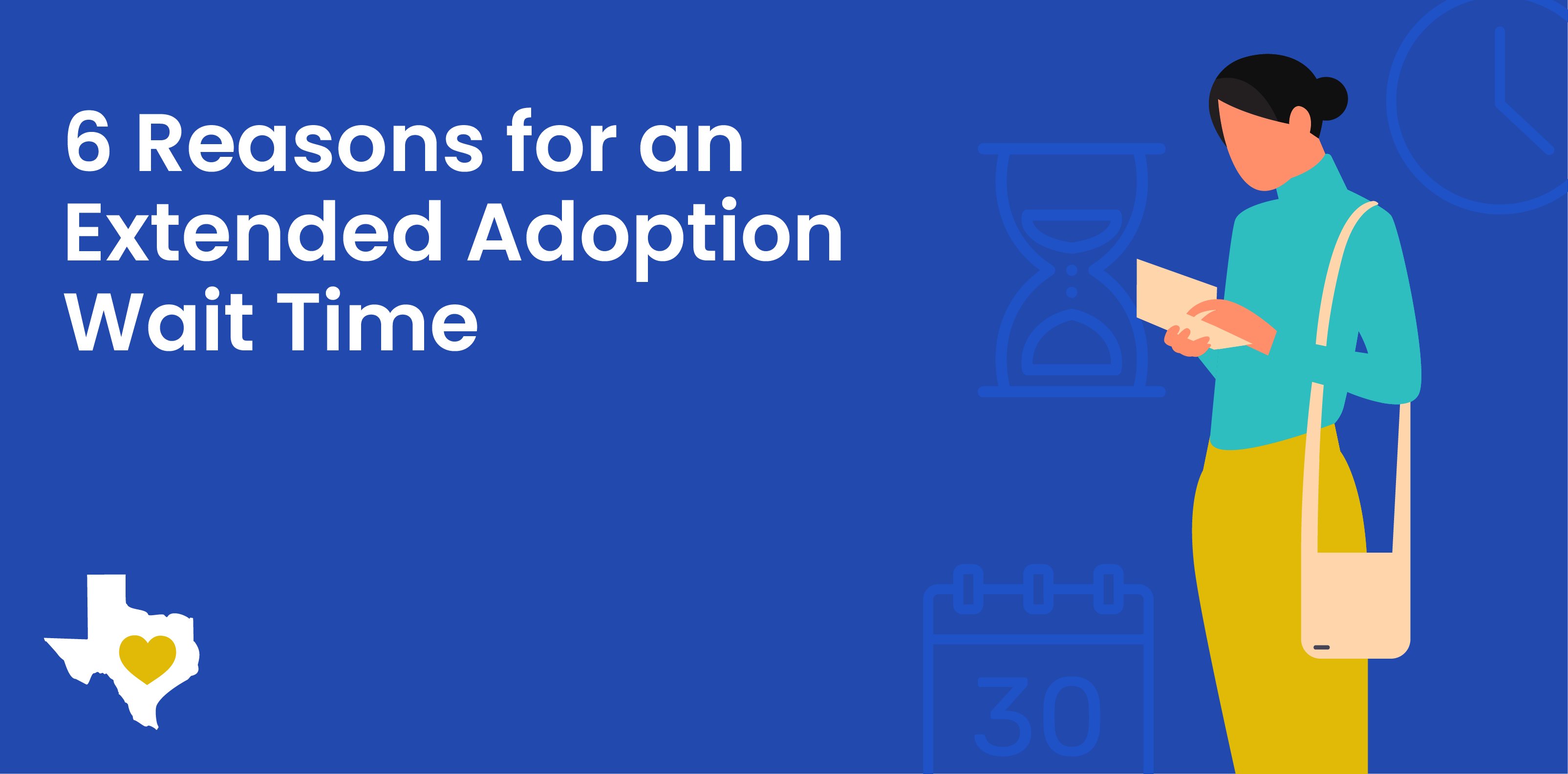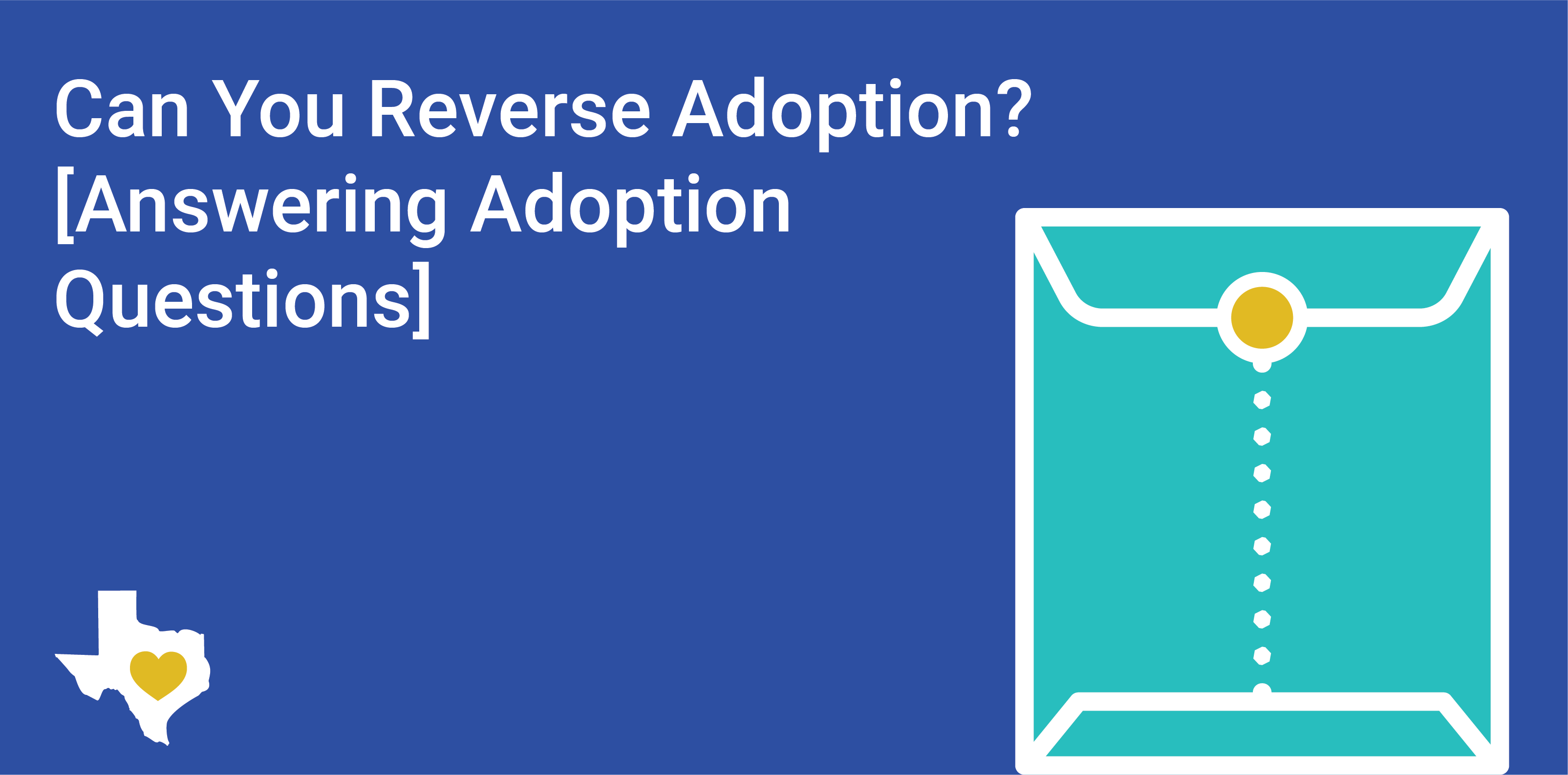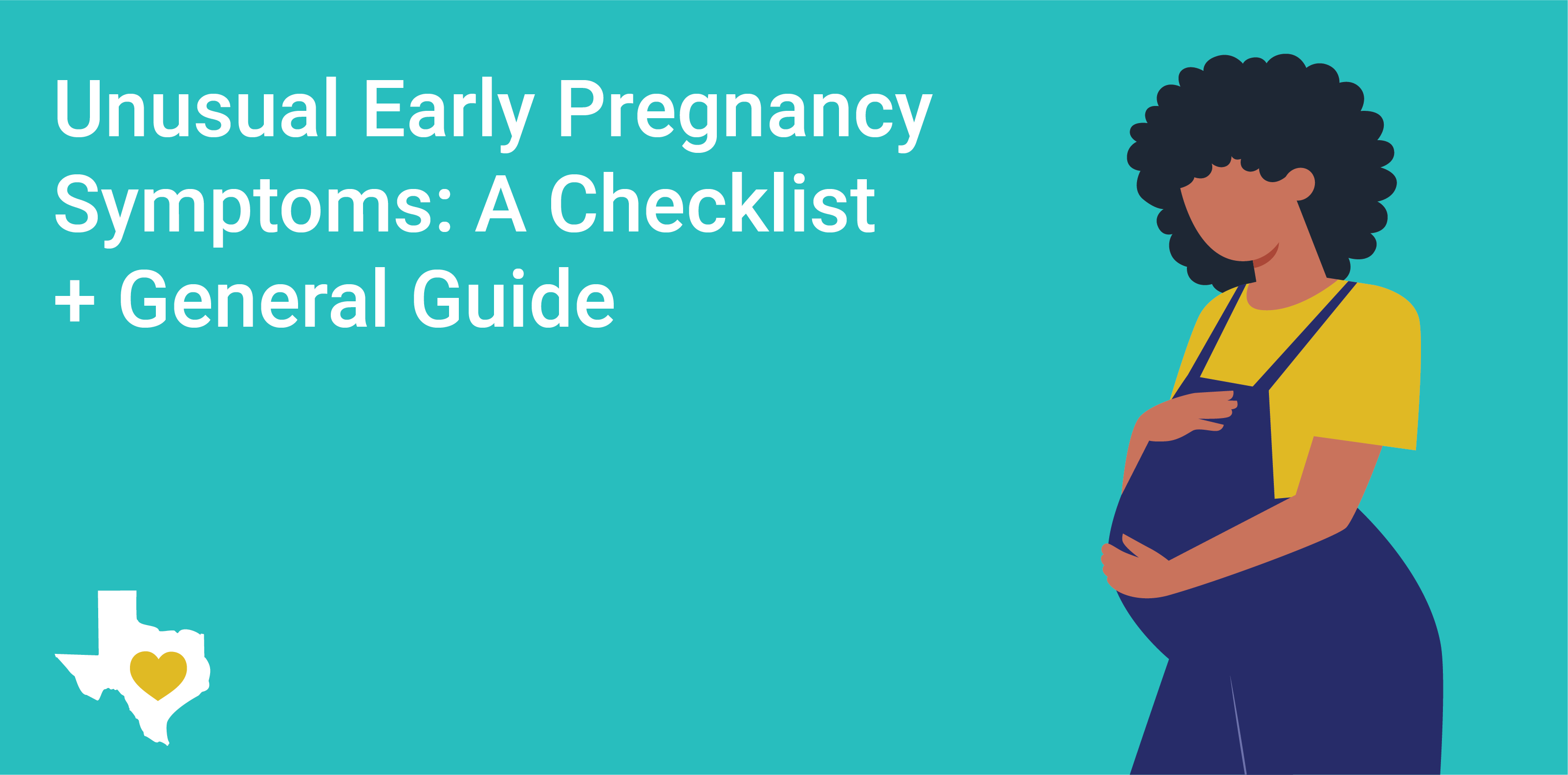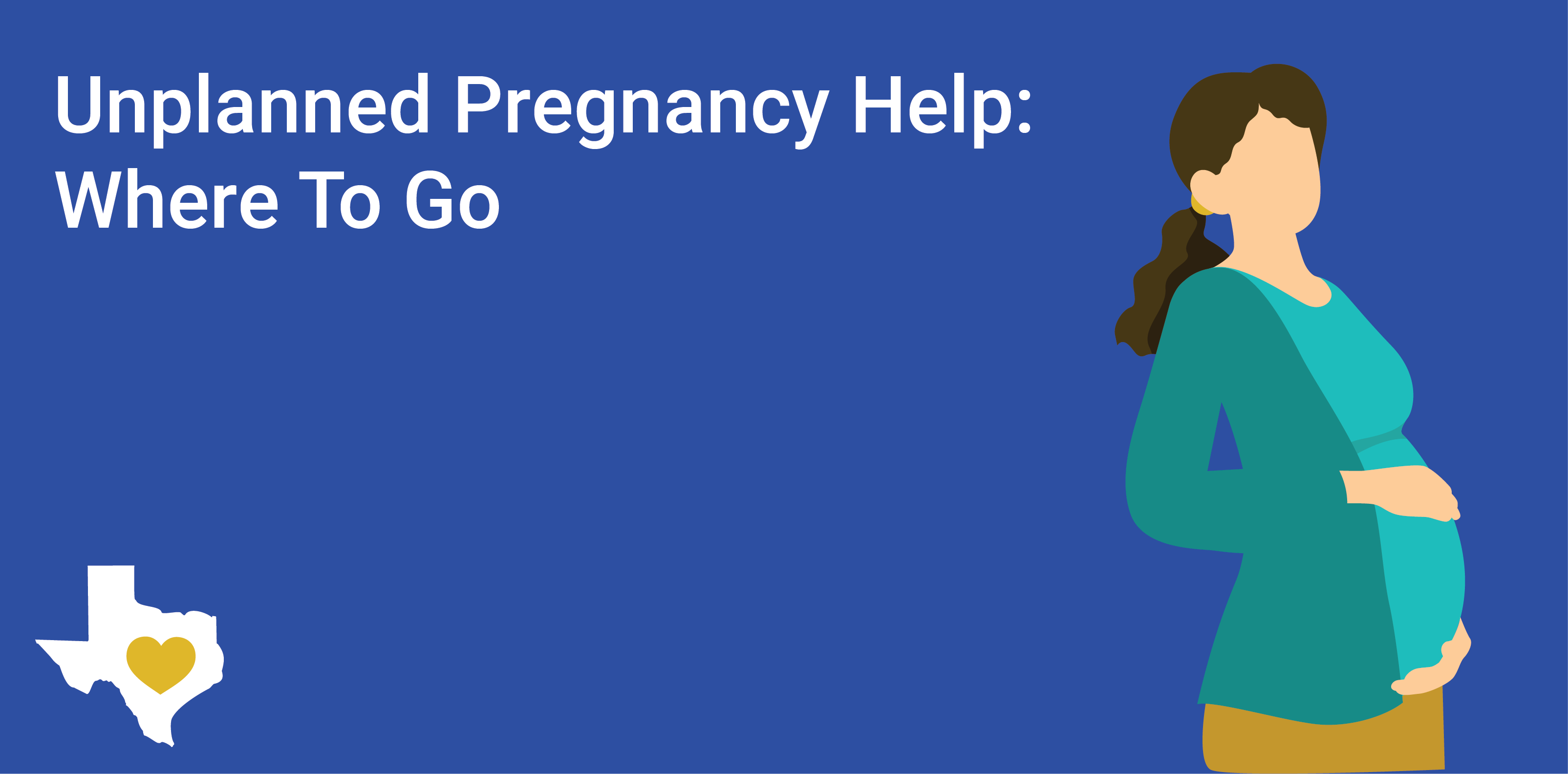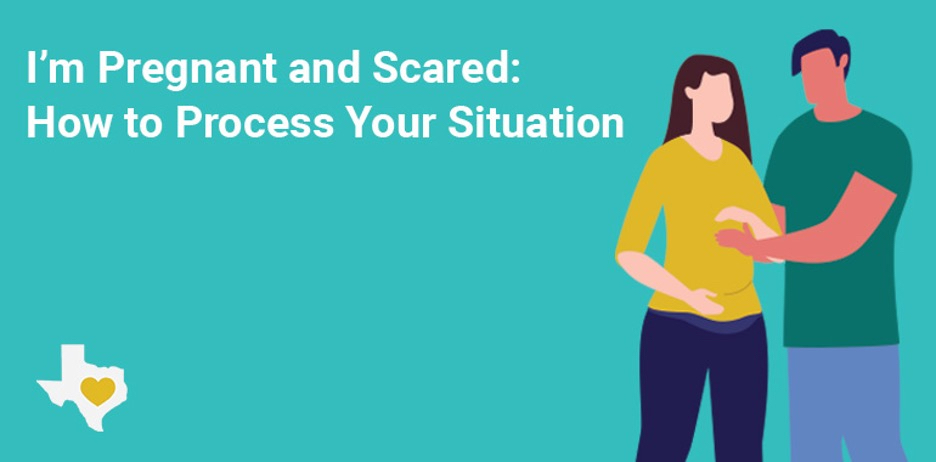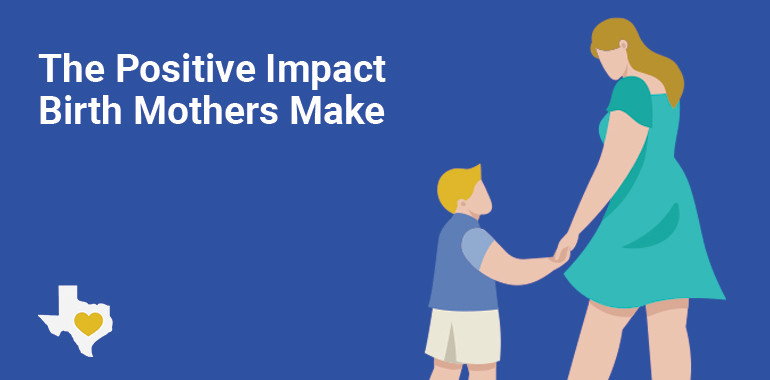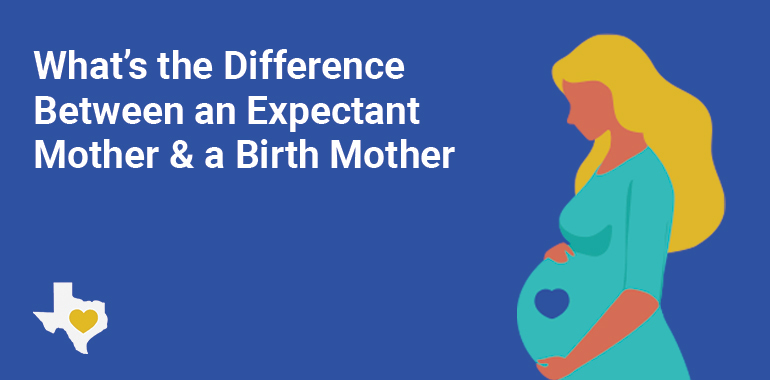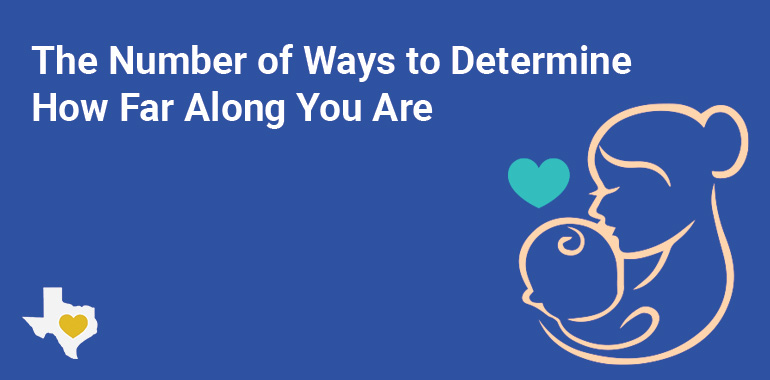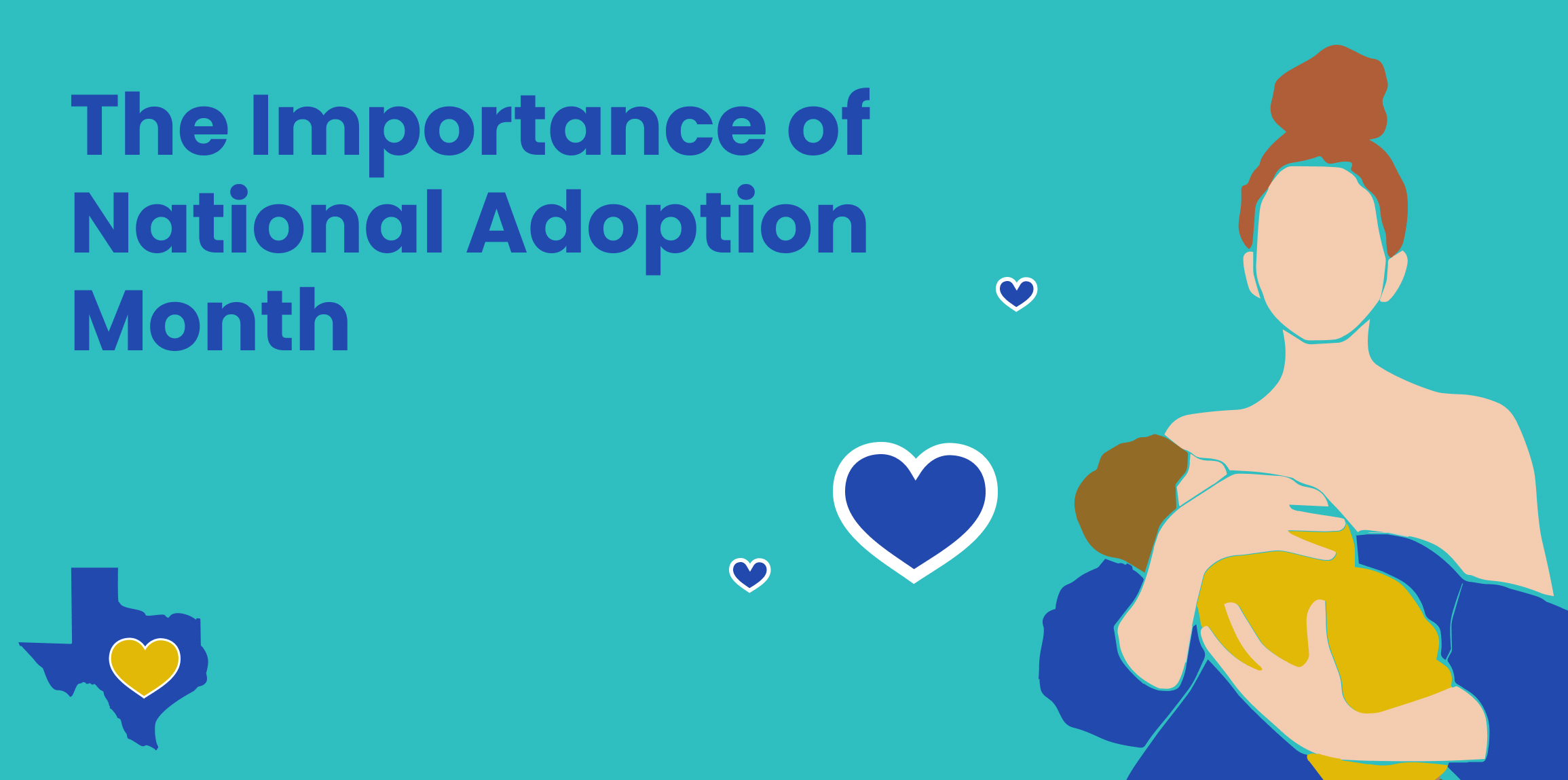Learn how to navigate the challenges of transracial adoption, including the negative effects of transracial adoption, with culturally sensitive parenting strategies.
Continue readingHow Unplanned Pregnancy Affects Relationships and Best Tips
Discover how unplanned pregnancy affects relationships and the helpful tips from the experts at Texas Adoption Center. Remember, you’re not alone.
Continue readingExplaining Adoption: What Does Adoption Mean?
So, what does adoption mean? Explore answers and compassionate support at Texas Adoption Center for expectant and birth mothers.
Continue readingAm I Pregnant or Am I Overthinking?
Am I pregnant or am I overthinking? It’s a question that many have stressed over. This article sheds light on the situation and helps you make the best choice.
Continue readingAre You Pregnant and Scared of Life Changing?
Being pregnant and scared of your life changing is a completely normal and rational feeling. Discover the options you have and the support you need with TAC.
Continue readingUnveiling the Truth: Can an Abortion Ever Fail?
Women facing unexpected pregnancies often ask: “Can an abortion fail?” This is a valid concern. This article explains the reality of the situation and offers options.
Continue readingHidden Pregnancy: Signs and Symptoms
You deserve to know all the hidden pregnancy signs and symptoms. Find premier support, including services from the Texas Adoption Center.
Continue readingFull Guide to Choosing Adoptive Parents for Your Baby
This guide to choosing adoptive parents helps birth mothers decide what is most important to them and what to look for in a prospective adoptive family.
Continue readingCan You Change Your Mind About Adoption?
Wondering if you can change your mind about adoption? This question is entirely normal, and we have the answers you’re looking for.
Continue readingBraveLove & Texas Adoption Center: The Pro-Adoption Movement
BraveLove is an impactful organization that works to further the Pro-Adoption Movement. With partners like TAC we can build a more accepting and loving culture.
Continue readingAnswering: What is Transracial Adoption?
Wondering what transracial adoption really is and how it works? Here’s everything you need to know about successful transracial adoption.
Continue reading6 Reasons for an Extended Adoption Wait Time
Long adoption wait times can be confusing and stressful. Here are some of the top reasons behind adoption wait time and advice for hopeful parents.
Continue readingCan You Reverse an Adoption? [Answering Adoption Questions]
Can you reverse an adoption? This guide answers key questions expectant mothers might have during the adoption process.
Continue readingUnusual Early Pregnancy Symptoms: A Checklist + General Guide
Unusual early pregnancy symptoms can be overwhelming. Learn about morning sickness, fatigue, breast tenderness & more so you’re prepared!
Continue readingHow Do Men React To An Unplanned Pregnancy? What To Do
How do men react to an unplanned pregnancy, and what can women do to protect themselves if they are afraid to tell the father? Read to find out.
Continue readingUnplanned Pregnancy Help: Where To Go
Find support and resources for navigating an unplanned pregnancy. Learn about your options for your and your baby’s future.
Continue readingWhat Options Do Expectant Mothers Have for Adoption in Texas?
Need to know what options there are for adoption in Texas for prospective birth mothers? This article has everything you need to know.
Continue readingI’m Pregnant and Scared: How to Process Your Situation
The news of pregnancy is often scary and difficult to process for many women. You have received life-changing news, so give yourself time to process it. However, there are resources to help you during this time whenever you need support. Get more information in our latest blog.
Continue readingThe Positive Impact Birth Mothers Make
Birth mothers make a positive impact on the world and mean everything for individual families looking to adopt. Read on to learn more about birth mothers!
Continue readingWhat’s the Difference Between an Expectant Mother & a Birth Mother?
Learn more about the differences between these titles and what you can expect during an adoption process.
Continue readingI’m Pregnant and Can’t Afford the Baby (Options You Have)
Finding out you’re expecting can come with a rush of emotions—especially if your first thought is, “I’m pregnant and can’t afford the baby.” If you’re facing an unexpected pregnancy, you’re not alone, and you’re not out of options. The financial weight you’re carrying is real, but there are practical steps, caring people, and resources that can help you sort through pregnancy and financial options at your own pace.
At Texas Adoption Center, we meet people in all kinds of situations—students finishing a semester, moms already caring for little ones, women starting a stable job, and those between jobs. No matter your current situation, you deserve a comfortable and confidential place to ask questions, get financial help, and explore what feels right for you. That might include parenting with support, short-term assistance, or learning more about adoption—without pressure.
Quick definition: When we talk about “affording a baby,” we are discussing three stages—immediate pregnancy costs (appointments, transportation, delivery), newborn essentials, and ongoing needs like housing, childcare, and medical care (including health coverage and health insurance).
First—your concern is valid (and you have time)

It’s normal to feel overwhelmed, scared, or even frozen when money is tight. Many pregnant women tell us they feel like everything must be decided today. It doesn’t. Take a breath. You can make good choices one step at a time, even when finances play a large role in your decision.
Start by separating what’s urgent from what can wait. Urgent might look like scheduling prenatal care, asking about coverage options, or talking to someone who’s a good listener and won’t judge. Later decisions—like long-term childcare or whether to parent or consider adoption—can follow once you’ve gathered information. If you’re unsure, we’ll walk with you, explain programs for low-income families, and help you understand the difference between immediate relief and long-term planning.
Most importantly, your worth isn’t measured by a bank account. The fact that you’re here, looking for information and support, already shows how much you care about your child and your future. You have options—and you have time to decide which path fits your life, your values, and your unique circumstances.
What “Affording a Baby” Really Covers (and Where to Find Financial Help)
When you say, “I’m pregnant and can’t afford the baby,” it helps to break the costs into three buckets. Seeing the full picture makes pregnancy and financial options easier to compare and choose from. Below is a quick snapshot you can use as a starting checklist.
| Cost Bucket | Typical Needs | First Places to Explore |
| Immediate (Pregnancy) | Prenatal care, lab work, ultrasounds, transportation to regular in-person visits | Health coverage through Medicaid/CHIP-Perinatal or Marketplace health insurance; clinic payment plans; community programs |
| Newborn (First Weeks) | Safe sleep (crib/bassinet), car seat, diapers/wipes, feeding supplies for a new baby | Community closets, local nonprofits serving needy families, baby-item exchanges |
| Ongoing (Months 1–12+) | Housing, childcare, pediatric visits, maternity care follow-ups | Subsidized childcare, rent/utility assistance, sliding-scale clinics for low-income households |
The goal isn’t to handle everything today. Start with the most urgent items, then layer in financial assistance options as you learn what you’re eligible for.
Immediate Pregnancy Costs & Health Coverage
The first priority is your health and your baby’s health. If you’re wondering how to afford prenatal care, there are numerous programs designed to reduce costs for pregnant women—even if you’re between jobs or your financial situation has recently changed.
- Medical visits & testing: Ask clinics about sliding-scale fees and payment plans for prenatal care. Many community clinics can help you apply for health coverage and schedule the most essential appointments first.
- Insurance pathways: Depending on eligibility, Medicaid/CHIP-Perinatal or Marketplace health insurance (via the Affordable Care Act) can lower costs for ultrasounds, screenings, and delivery.
- Transportation help: If getting to appointments is the biggest hurdle, ask about bus vouchers, gas cards, or rides through local partners and government organizations.
Remember: your well-being matters. Tackling medical care early can reduce complications later, lighten the financial burden, and keep more pregnancy options open.
Newborn Essentials for Needy Families
Preparing for a new baby doesn’t have to mean brand-new everything. Focus on safety and the few items you’ll use every day; you can add more as you feel ready.
- Safety first: A crib or bassinet and a properly fitted car seat are non-negotiables; many local nonprofits help low-income families access both.
- Feeding & diapers: Look for diaper banks, WIC nutrition support, and community exchanges. These financial pregnancy options can dramatically cut monthly costs for families.
- Smart sequencing: If you’re not sure what you’ll be able to afford before delivery, aim to secure the top two or three items first, then expand your list after you’ve given birth and understand what you truly use day to day.
Ongoing Expenses for Low-Income Households
After delivery, the budget shifts from one-time purchases to steady monthly costs. Planning now can protect your child’s life and your long-term goals.
- Housing & utilities: Ask about rent and utility relief, especially if your current situation is temporary. Short-term temporary assistance can keep you stable while you pursue a stable job or training.
- Childcare & work: Subsidized childcare can make returning to work possible; many programs consider unique circumstances and financial options beyond income alone.
- Healthcare after delivery: Postpartum visits and pediatric checkups may be covered or discounted under certain plans; look for clinics that serve low income families and accept Marketplace or Medicaid health insurance.
- Mental health & support: Your emotional health matters. Low-cost counseling and community groups can help you feel ready and keep the door open to future choices as your financial situation changes.
If, while mapping these costs, you decide parenting isn’t the best fit, that’s okay. You can still explore adoption pathways (including open and closed adoption, or semi-open adoption), choose an adoptive family, and design the level of contact you prefer—options we’ll cover next.
Your Realistic Options in Texas for Pregnant Women

No two situations are the same. Your pregnancy options should reflect your values, your financial situation, and the kind of future you want for yourself and your child. Below are three clear paths many women consider—each with real supports you can tap into today.
Parenting with Support: Health Insurance and Texas Programs
If your heart leans toward parenting but you’re worried you won’t be able to afford everything, there are numerous programs designed to help low income families and needy families bridge the gap. Think of this as financial assistance parenting—practical help so you can focus on your new baby and healing.
- Coverage & care: If you don’t have employer coverage, look into Medicaid/CHIP-Perinatal or Marketplace plans under the Affordable Care Act. This route can lower costs for prenatal care, delivery, and maternity care, especially when money is tight and finances play a big role in decisions about work and childcare.
- Everyday essentials: WIC and community partners can help with nutrition, formula or breastfeeding support, and infant supplies; some government organizations also coordinate diapers, cribs, and car seats for qualifying households.
- Stability while you plan: If juggling bills is the biggest barrier, ask about rent, utility, or transportation support. The goal is to keep you safe and as financially stable as possible while you make big decisions about school, a dream job, or childcare.
You don’t have to navigate this alone. Our team can walk you through financial assistance options and health-plan choices so you can compare financial pregnancy options without pressure and decide what fits your life.
Temporary Assistance & Kinship Support
Sometimes you want to parent—but not right now. Temporary pathways can keep your long-term plan intact while you stabilize housing, finish school, or start a stable job.
- Kinship care: A trusted relative or friend cares for your baby short-term while you get back on your feet. You remain the legal decision-maker and keep your parental rights.
- Temporary guardianship: A time-limited legal arrangement that allows someone you choose to make day-to-day decisions for your child. It can reduce immediate stress without closing the door open to parenting later.
- Short-term relief: Local nonprofits and community groups offer services like transportation, meals, or help with appointments—practical support that helps you overcome challenges in the first weeks after you’ve given birth.
These options protect your bond with your baby and your long-term life goals, while offering enough support now to move toward a more independent life.
Adoption—an Empowering, Loving Choice
If parenting isn’t the right fit in your current situation, adoption might be. Adoption is not “giving up”—it’s a thoughtful plan that puts your baby’s stability first while honoring your reality. With Texas Adoption Center, you design the experience:
- You choose the family: Review profiles, meet potential adoptive parents, and select the adoptive family that matches your values and hopes for your child’s life.
- You choose the level of contact:
- Open adoption can include updates, photos, and even regular in-person visits—open adoption leaves space for an ongoing relationship when you and the adoptive family agree.
- Semi open adoption allows contact through the agency, which some women find more comfortable.
- Closed adoption means there’s no ongoing contact; closed adoption can feel right for some families who want privacy. You can also compare open and closed adoption to see which fits best.
- You get real-world help: As allowed by Texas law, certain pregnancy-related expenses—like transportation, some medical needs, and housing, and limited legal or court costs—may be covered so you can focus on your health and recovery. Our specialists explain all our services in a comfortable and confidential place, answer questions, and keep the process confidential and compassionate.
Adoption gives many pregnant women room to breathe: you can be financially prepared for the future, keep your biggest supporters close, and still choose a loving home for your baby. Some find peace knowing the adoptive family they picked is financially stable and ready, while they work toward their own goals. Others feel relief simply having financial options that match their unique circumstances.
If you’re unsure which path is right, that’s okay. You don’t have to decide today. We’ll talk through your pregnancy options, outline next steps, and support you—without pressure—so you can choose what feels right when you feel ready.
Step-by-Step Plan for This Week (Tiny Wins That Lower Stress)

When finances play a big part in your choices, it helps to focus on small actions you can take right now. These steps won’t solve everything at once, but they’ll lower anxiety, bring financial help into reach, and keep all your pregnancy options on the table while you decide what feels right.
1) Talk to someone safe today
Choose one good listener—a trusted friend, a caseworker, or a Texas Adoption Center specialist—who can offer calm, practical support. You deserve a comfortable and confidential place to ask questions and sort through the big decisions ahead. If you prefer, start with a text or message rather than a phone call.
2) Book prenatal care and ask about coverage
Call a clinic and schedule your first prenatal care visit, even if money is tight. Ask what health coverage or health insurance you might qualify for (Medicaid/CHIP-Perinatal or a Marketplace plan under the Affordable Care Act) so you’re able to afford labs, ultrasounds, and essential checkups. Getting seen early protects your health during pregnancy and can reduce costs later.
3) Apply for practical programs now
Put in applications for WIC, housing/utilities aid, and transportation help. Many government organizations and community partners offer temporary assistance to pregnant women, low-income families, and needy families—think diaper banks, car-seat programs, or emergency vouchers. These financial assistance options can stabilize your financial situation while you plan.
4) Make a two-column essentials list
Divide a page into “What I need for my new baby” and “Where I’ll get it.” Start with a safe sleep space, car seat, diapers/wipes, and feeding supplies. Next to each item, note the program, person, or store that can help. This turns “I’m pregnant and can’t afford the baby” from a spiral into a checklist you can manage.
5) Sketch two scenarios—no pressure
Draft a simple one-page plan for (A) parenting with support and (B) adoption. For adoption, jot what you’d want in an adoptive family and the level of contact you prefer—open adoption, semi-open adoption, or closed adoption. This exercise doesn’t lock you in; it just clarifies your financial options and personal values so you can feel ready when it’s time to choose.
6) Outline a hospital day plan
Decide who you want in the room when you’ve given birth, what photos you’d like, and how you want the first moments handled. If you’re exploring adoption, include whether you’d like regular in-person visits later (if you choose an open path) and what an ongoing relationship might look like with the adoptive parents. Knowing your wishes now reduces stress later.
7) Protect your mental health daily
Set aside 10–15 minutes for grounding—slow breathing, a short walk, or journaling. These small resets help you overcome challenges and keep decisions clear. If anxiety spikes, reach out. There are services designed to support women in a confidential place while they weigh pregnancy and financial options and move toward an independent life that fits their life goals.
Emotional Wellbeing & Mental Health During Pregnancy

Money stress plus pregnancy can feel like too much at once. If you’re anxious, not sleeping, or cycling through worst-case thoughts, you’re not broken—you’re human. Many pregnant women find that naming the fear out loud and getting steady support makes the rest of the decisions easier. You deserve a comfortable and confidential place to process everything, and we can offer that.
Here are gentle ways to care for your mind while you sort through pregnancy options:
- One calm thing daily: Ten minutes of slow breathing, a short walk, or journaling can reset your nervous system and help you overcome challenges with more clarity.
- Limit the spiral: Pick a “worry window” (15–20 minutes). When fears pop up outside that window, jot them down and return to them later. This keeps big feelings from running your day.
- Talk to a good listener: A trusted friend, counselor, or Texas Adoption Center specialist can help you turn fog into a plan.
- Consider counseling: Short-term therapy (CBT, trauma-informed care) can reduce panic, improve sleep, and make space for decisions about parenting, adoption, or temporary assistance—at your pace.
- Care for your body: Hydration, simple meals, and rest support your mood. Small wins count.
If emotions feel heavy most days, or you’re struggling to function, reach out. Low-cost services and community programs exist specifically for women navigating financial stress and pregnancy. We can connect you with local resources and provide a confidential place to talk through how your financial situation intersects with your wellbeing.
Remember: your mental health matters as much as your budget. With the right support, you can make the big decisions when you feel ready—not rushed.
You’re Not a Bad Person if Motherhood Isn’t Your Choice Right Now

Choosing not to parent in your current situation does not make you selfish or uncaring—it makes you honest about your unique circumstances and thoughtful about your child’s future. Many women face big decisions during pregnancy, and love can look like different paths: parenting with support, waiting until you feel ready, or creating an adoption plan that gives your baby stability from day one.
If you’re leaning toward adoption, remember you still have a voice and control. You can review adoptive family profiles, meet potential adoptive parents, and compare open and closed adoption (including semi-open) to choose the level of contact that fits you best. Some families prefer an ongoing relationship with photos, messages, or occasional visits; others want more privacy. None of these choices is “right” or “wrong”—they’re simply options designed to honor you and your baby.
Whatever you decide, you deserve a comfortable and confidential place to talk through feelings, get facts, and move at your own pace. We’ll listen, offer clear information about options and resources, and stand beside you—without pressure—so your decision reflects your values and the future you want for yourself and your child.
We’re Here—No Pressure, Just Support
If you’re thinking, “I’m pregnant and can’t afford the baby,” you don’t have to figure it out alone. Texas Adoption Center offers a comfortable and confidential place to talk through your pregnancy options, map out financial help, and decide what feels right for you—at your pace.
Here’s how we can help—today and over the next few weeks:
- Talk it through, judgment-free: We’ll listen, help you sort urgent needs from long-term plans, and outline financial assistance options you may qualify for (including health programs and community resources).
- Explore adoption (only if you want to): Review adoptive family profiles, learn the differences between open adoption, semi-open adoption, and closed adoption, and decide what level of contact feels right for you and your child. If you move forward, we’ll explain the process clearly—including any allowed pregnancy-related support and potential court costs—so you always know what to expect.
- Coordinate care and connections: From prenatal care referrals to housing and transportation programs, we’ll connect you with the right partners so you can be as financially stable and supported as possible while big decisions take shape.
You deserve a caring guide, not more pressure. If you’re ready to talk—or just want to ask a few questions—reach out anytime.
I Have a Fear of Pregnancy (What Do I Do?)
Pregnancy is often described as a beautiful journey—but for many people, it can also be a deeply frightening experience. If you’re struggling with a fear of pregnancy, you are not alone. In fact, fear surrounding pregnancy is more common than most people realize, and it can range from general anxiety to intense panic about the idea or reality of being pregnant. This fear can significantly impact a woman’s life, affecting her overall well-being and emotional health.
Whether you’re afraid of giving birth, bodily changes, complications, or even being pregnant at all, it’s important to know that your feelings are valid. And more importantly—you have options, support, and the right to make the decision that’s best for you. Social support from family, friends, or professionals can play a crucial role in helping you manage fear of pregnancy and feel more in control.
In this blog, we’ll explore what causes fear of pregnancy, how to cope, and what to do if you’re pregnant and feeling overwhelmed. We’ll also introduce adoption as a supportive, empowering option for those who decide parenting isn’t the right path.
What Is Fear of Pregnancy?
Fear of pregnancy can take many forms, and for some, it’s a specific condition known as tokophobia—an extreme fear of childbirth or pregnancy. Tokophobia is considered a specific phobia and a type of anxiety disorder, characterized by persistent, irrational fears related to pregnancy, childbirth, or medical procedures. But even without a formal diagnosis, you might feel anxious, panicked, or overwhelmed at the thought of becoming or being pregnant; some people may be diagnosed with related mental health conditions.
You may:
- Feel afraid of getting pregnant, even with contraception
- Avoid relationships or intimacy out of fear of pregnancy
- Panic at the idea of labor or delivery
- Feel anxious or fearful about welcoming a baby
- Feel intense dread if you’re already pregnant
- Struggle with intrusive thoughts or worst-case scenarios
Some people experience excessive fear or even severe fear that can interfere with daily life.
These fears aren’t irrational or shameful—they’re responses to deeply rooted concerns that deserve attention and support.
Common Causes of Fear of Pregnancy
Fear of pregnancy can come from a range of emotional, physical, and social experiences. Various factors—including psychological, social, and medical influences—can contribute to this fear. Here are a few common causes:
1. Fear of Pain or Childbirth
Many people are terrified of labor and delivery, with labor pain being one of the most common sources of fear. Horror stories from others, traumatic images in the media, or personal experiences can all lead to intense anxiety about the pain of childbirth or potential complications. For some, fear of vaginal birth specifically may cause them to consider alternatives such as a Caesarean section (C-section).
2. Bodily Changes
Pregnancy brings dramatic changes to your body—weight gain, hormonal fluctuations, and loss of control over your own physical self. For some, this is extremely distressing, especially for those with past trauma, body image struggles, or eating disorders.
3. Fear of Medical Complications
Worries about miscarriage, stillbirth, high-risk pregnancy, or medical emergencies can create constant anxiety. If you’ve experienced pregnancy loss or medical trauma in the past, those fears may feel even more real.
If you have concerns about pregnancy complications, it is important to seek medical help and consult a doctor or doctors for guidance and reassurance.
4. Emotional or Mental Health History
People who struggle with anxiety, PTSD, or depression—recognized mental health disorders—may find that pregnancy intensifies their symptoms or creates new ones. Psychiatric disorders, such as anxiety disorder, depression, and postpartum depression, can be related to fear of pregnancy. The hormonal changes alone can be overwhelming and difficult to manage. If symptoms become overwhelming or interfere with daily life, it is important to consult a mental health provider for an accurate diagnosis and support.
5. Lack of Support
If you’re facing pregnancy alone or without emotional or financial support, fear can escalate quickly. Friends, family members, mothers, and parents are important sources of support for people facing pregnancy fears. The idea of raising a child without help may feel unbearable—and that’s a valid concern mothers may have.
6. Trauma or Abuse
Pregnancy can be particularly triggering for individuals who have experienced sexual trauma, domestic abuse, or reproductive coercion. Trauma can lead to avoidance of sexual contact or sexual activity due to fear of pregnancy, which may impact emotional well-being and relationships. The experience may feel like a loss of control or even a violation, which adds to the fear.
What to Do If You Have a Severe Fear of Pregnancy
Acknowledging your fear is the first step. From there, you can explore practical ways to manage your emotions and make decisions that prioritize your well-being. Various treatments, including therapy and medication, are available to help manage these fears. Worry and anxieties about pregnancy are common, but with the right support, they can be managed effectively. Here are some strategies:
1. Talk to a Mental Health Professional
A licensed therapist—especially one trained in perinatal mental health—can help you unpack the root of your fears, learn coping strategies, and process any past trauma that might be influencing your experience.
- Ask about Cognitive Behavioral Therapy (CBT), which can help reframe fearful thoughts.
- Consider exposure therapy if you’re avoiding anything related to pregnancy.
- Look into trauma-informed counseling if you’ve experienced abuse or medical trauma.
2. Learn About Pregnancy in a Safe, Supportive Setting
Education can often reduce fear—especially when it replaces myths and worst-case scenarios with facts. Try prenatal classes or guided sessions with a doula, nurse, or midwife. Choose resources that offer empathy, not pressure.
- Ask questions without judgment.
- Tour birthing centers or talk to professionals to understand what support is available.
- Focus on what’s in your control rather than what’s not.
3. Build a Support System
Even one trusted person—whether a friend, counselor, advocate, or partner—can make a huge difference. If you’re feeling alone, look into pregnancy support groups or reach out to organizations like Texas Adoption Center, which provides non-judgmental support for women facing unexpected pregnancies. Building a strong support system can help people feel more confident about giving birth to children.
4. Practice Self-Compassion
You’re allowed to be scared. You’re allowed to say this is hard. Try not to judge yourself for feeling the way you do. What you’re experiencing doesn’t mean you’re weak, broken, or unfit—it means you’re human.
Step-by-Step: How to Cope With or Prepare for Pregnancy When You’re Afraid
If you’re facing a fear of pregnancy—whether it’s the idea of becoming pregnant or you already are—the thought of what to do next can feel paralyzing. Breaking things down into small, manageable steps can help you regain a sense of control and reduce anxiety.
Addressing your fears and seeking proper support can promote a healthy pregnancy and a more positive experience. Severe anxiety or excessive fear can affect your daily life, sleep, and overall wellbeing, and may require professional support. Here’s a step-by-step guide to help you move forward at your own pace.
Step 1: Acknowledge Your Fear Without Judgment
The first step is simply being honest with yourself. Say it out loud: “I’m afraid of pregnancy.” It’s normal to feel concerned about pregnancy, and acknowledging these feelings is an important part of the process. Recognizing your emotions is not weakness—it’s bravery. Remind yourself: Your feelings are valid. Fear doesn’t mean you’re incapable; it means you’re aware. Talking openly about your fears with trusted friends, loved ones, or healthcare providers can help you feel supported and less alone.
Step 2: Educate Yourself Safely
Fear often thrives on the unknown. Start learning more about pregnancy and childbirth from reliable, non-alarmist sources.
- Read articles or books from trusted medical organizations
- Take a virtual or in-person prenatal class
- Watch videos that explain what happens during each trimester
- Ask healthcare providers questions at your own comfort level
Keep in mind: You’re in control of how much and how fast you learn.
Step 3: Identify What Scares You Most
Not all fears about pregnancy are the same. It’s important to understand the differences between normal worries and more severe fears, such as distinguishing everyday concerns from conditions like tokophobia. Are you afraid of pain? Of labor? Of losing control of your body? Of parenting afterward? Write down your top fears to identify what you need the most support with. Knowing your exact fears helps you create a targeted plan for coping.
Step 4: Build Your Support Team
Fear becomes more manageable when you don’t have to carry it alone. Find at least one trusted person to talk to about your feelings—this could be:
- A therapist
- A close friend or family member
- A pregnancy counselor or doula
- A caseworker from Texas Adoption Center
Ask yourself: “Who helps me feel safe when I’m overwhelmed?”
Step 5: Make a Personal Pregnancy Plan (Even If You’re Still Unsure)
You don’t have to be committed to one path yet, but sketching out a plan can help reduce panic. For example:
- What medical care would I need or want?
- Who would be with me at appointments or during delivery?
- What kind of pain management options would I consider?
- If parenting isn’t for me, what would an adoption plan look like?
By outlining possibilities, you shift from being reactive to being proactive.
Step 6: Practice Mindfulness & Grounding Techniques
When fear feels overwhelming, learning how to ground yourself in the moment can help. Try:
- Deep breathing exercises
- Progressive muscle relaxation
- Journaling your thoughts without censoring
- Guided meditations (search “pregnancy anxiety” or “trauma-informed mindfulness”)
The goal isn’t to erase the fear—but to soothe your nervous system so you can function through it.
Step 7: Consider All Your Options Without Pressure
As you prepare, remember: you have the right to explore every path. That includes parenting, adoption, or seeking medical advice about alternatives.
Texas Adoption Center can walk with you through every scenario without judgment or pressure. Our goal is to help you feel supported, not steered. Whatever you decide, we’ll support your choice with compassion and care.
What If I’m Already Pregnant and Feeling Overwhelmed?
If you’re pregnant right now and overwhelmed with fear, please take a deep breath. You are not trapped. You have options. You are not alone. Many pregnant women experience similar feelings, and it’s normal to have concerns during pregnancy.
Here’s what you can do:
- Reach out to someone today—a therapist, pregnancy counselor, or someone at Texas Adoption Center.
- Take it one step at a time. You don’t have to figure everything out today.
- Know that your feelings are valid—even if they don’t make sense to others.
- Explore your choices—including adoption, parenting with support, or connecting with agencies that help women through crisis pregnancies.
Fear of pregnancy can significantly impact your daily life, but support and options are available to help you move forward. Fear of pregnancy doesn’t mean you won’t make the right decision for you. It means you’re thinking carefully—and that’s something to be proud of.
Considering Adoption as a Loving Choice
If pregnancy feels too overwhelming to continue with parenting, adoption may be an option worth exploring.
Adoption is not giving up. It’s a decision made with love, courage, and hope for your child’s future.
At Texas Adoption Center, we work with women across Texas to create custom adoption plans that reflect your wishes. You choose the level of openness, the adoptive family, and the kind of relationship you want going forward.
We can help with:
- Medical and pregnancy-related costs
- Housing and transportation
- Counseling and emotional support
- A safe, supportive space to make your decision
You don’t have to decide today. But knowing adoption is an option can bring comfort if parenting feels impossible and pregnancy feels too heavy to carry alone.
FAQs
What causes fear of pregnancy?
Fear of pregnancy can stem from anxiety about pain, trauma, past medical complications, body changes, or lack of emotional and financial support. It’s also common in people with existing mental health conditions. In some cases, fear of pregnancy can be a health condition that requires support and professional care.
Is fear of pregnancy normal?
Yes. Many women—even those who go on to parent—feel anxious or afraid about pregnancy. You are not alone, and your feelings are completely valid.
What is tokophobia?
Tokophobia is an intense, clinical fear of pregnancy and childbirth. It is a recognized disorder and a specific type of anxiety disorder that can be diagnosed by a mental health professional. There are two types: primary tokophobia, which occurs in women who have never been pregnant and often begins in adolescence, and secondary tokophobia, which develops after a traumatic obstetric experience such as difficult labor, miscarriage, or stillbirth. Tokophobia can lead to panic attacks, avoidance behaviors, and depression. Therapy and support can be incredibly helpful for those experiencing it.
Can I still choose adoption if I’m afraid of being pregnant?
Absolutely. Adoption is a loving, compassionate choice available to you during any stage of pregnancy. The team at Texas Adoption Center can help you explore this option at your own pace, without pressure or judgment.
You Deserve Support—Whatever You Decide
Whether you’re afraid of becoming pregnant, already pregnant and overwhelmed, or unsure about what comes next, know this: You are not broken. You are not weak. You are not alone.
Fear is a signal—not a sentence. And with the right support, you can make a decision that honors both your well-being and your baby’s future.
Would I Be a Good Mom? (Questions to Help)
Becoming a parent is one of the most life-changing decisions you’ll ever face—and it’s completely normal to ask yourself: “Would I be a good mom?” If that question has been on your mind, you’re not alone. Many women—whether they’re expecting a baby now or thinking about the future—grapple with feelings of doubt, uncertainty, and fear, and worry is a natural part of this process. These emotions are often deeply felt and can sometimes be hard to articulate.
The truth is, there’s no single formula for being a good mom. Everyone’s circumstances, strengths, and struggles are different. It’s normal to question different paths or outcomes when considering motherhood. But there are a few key questions you can ask yourself to better understand your own readiness and confidence—and to help you explore your options in a safe, supportive, and judgment-free way.
Let’s walk through some of those questions together.
Introduction to Motherhood
Motherhood is one of life’s most profound journeys, filled with both challenges and moments of deep joy. Deciding whether you’ll be a good mom isn’t about fitting into a single mold or living up to someone else’s expectations. Instead, it’s about exploring the qualities that make for nurturing, loving, and effective parenting. Psychology shows us that while every mom and child are unique, there are certain traits—like empathy, patience, and adaptability—that often help women thrive in motherhood.
It’s important to remember that there’s no one-size-fits-all approach to being a good mother. Each woman brings her own strengths, experiences, and perspective to parenting.
There are plenty of “good mom quizzies” out there that provide results you should take with a grain of salt. The best first step is to listen to yourself and reflect on your own qualities, identify areas where you feel confident, and spot places where you might want to grow. This kind of self-exploration isn’t about judgment—it’s about understanding yourself better so you can make informed choices for your family and your life.
As you move through the course of motherhood, you’ll find that effective parenting is a journey, not a destination. By being open to learning and willing to explore your own path, you’re already taking important steps toward being the kind of mom your child needs.
1. Am I Emotionally Ready for Parenthood?
Raising a child isn’t just about diapers and baby bottles—it’s an emotional journey that takes patience, love, and resilience. While you don’t need to feel 100% prepared (no one ever does!), it’s helpful to reflect on how you currently feel about motherhood. Being present for your child and yourself is essential for building a strong emotional foundation.
- Do I feel emotionally stable and able to care for another person?
- Do I have unprocessed trauma or mental health challenges I’m still working through?
- Can I see myself providing consistent love, support, and safety for a child?
- Am I able to respond thoughtfully and calmly to my child’s emotions or needs?
If these questions leave you feeling unsure, that’s okay. Parenting doesn’t require perfection. But being aware of your emotional well-being—and having a support system to help you—is important. It’s also crucial to hear your own needs and feelings as part of your emotional readiness.
2. Do I Have a Strong Support System?
You don’t have to raise a baby alone. But knowing who would be in your corner can make a big difference.
- Do I have family or friends who would help with childcare, emotional support, or finances?
- Is there someone I can call in the middle of the night if I need help?
- Are there community or faith-based organizations I can turn to?
Having support doesn’t mean you have to be in a relationship or have a big family. Support can come from friends, mentors, counselors, or adoption professionals. If your support system is limited or uncertain, that may impact your decision—or it may simply be a sign to explore other resources.
3. Can I Meet My Child’s Basic Needs—Now and Long Term?
Financial stability is one of the most common concerns women have when considering parenthood. Children require much more than love—they need shelter, food, clothing, education, medical care, and a safe environment to grow, including a safe room or space in the house where the child can feel secure and supported.
Ask yourself:
- Am I currently employed or able to provide stable housing?
- Do I have a room or space in my house for a child?
- Can I afford to support a baby on my own?
- What would childcare look like if I had to return to work?
Even if the answer to these questions is “not right now,” that doesn’t mean you’re not a good person or wouldn’t be a good mom under different circumstances. Many women find themselves in temporary financial hardship and simply need time or support to regroup. If you’re worried about meeting your child’s needs, that’s a valid reason to explore all your options, including open adoption.
4. Am I Ready to Prioritize a Child’s Needs Above My Own?
Being a parent means making sacrifices—your time, your energy, your sleep, your career goals—and for many, even your social life. For some women, those sacrifices feel natural and worth it. For others, they feel overwhelming or incompatible with their life plans. Adapting to babies’ routines and needs, such as responding to a crying baby or adjusting to infant sleep patterns, is a significant part of this transition.
Consider:
- Am I ready to change my daily life around a baby’s schedule?
- Would I feel resentful if I had to delay school, work, or travel plans?
- Do I feel ready to invest the time it takes to be an engaged parent?
There’s no shame in saying “I’m not ready yet,” or “I don’t know if I can make that commitment.” In fact, being honest with yourself about your limitations is a powerful sign of maturity and care.
5. Do I Want to Parent—Or Do I Just Feel Like I Should?
Sometimes women feel pressure from others or society to keep the baby or become a parent, even if their gut says something different.
Imagine what parenting or choosing an alternative path might look like for you.
Ask yourself:
- Am I considering parenting because it’s truly what I want?
- Or am I feeling guilty, pressured, or unsure of other options?
- Have I allowed myself space to explore parenting alternatives like adoption?
It’s okay to ask hard questions and admit you don’t have all the answers. That doesn’t mean you’re selfish or irresponsible. It means you care enough to want the best outcome—for yourself and your baby.
Mental Health and Motherhood
Your mental health is a cornerstone of your ability to be a good mom. When you’re feeling balanced and supported, you’re better equipped to handle the ups and downs of daily life with your child. A good mom quiz can sometimes highlight areas where you might be struggling—like anxiety, depression, or stress—and point you toward resources that can help.
Self-care isn’t selfish; it’s essential. Taking time for activities that bring you joy, relaxation, or a sense of calm can make a big difference in your overall well-being. When mothers prioritize their mental health, they’re not only caring for themselves—they’re also creating a more stable, nurturing environment for their children. Kids are sensitive to their mother’s emotional state, and a mom who feels supported and cared for is more likely to build a strong, positive relationship with her child.
If you ever feel overwhelmed, remember that seeking support is a sign of strength, not weakness. Whether it’s talking to a friend, joining a support group, or reaching out to a mental health professional, taking care of your mental health is one of the best gifts you can give yourself and your family.
Parenting Styles and Expectations
Every mother brings her own unique approach to parenting, shaped by her own experiences, values, and personality. Some moms might find themselves naturally setting firm boundaries, while others lean toward a more flexible, permissive style. There’s no single “right” way to parent, but understanding your own style can help you become a more effective parent.
It’s important to have realistic expectations—not just for your child, but for yourself as a mother. Children are individuals, and what works for one may not work for another. Being open-minded, willing to adapt, and ready to learn from both successes and mistakes are all hallmarks of a good mother.
Effective parenting often involves setting clear boundaries, being consistent, and providing emotional support. These skills can be developed over time through self-reflection and a willingness to try new methods. By creating a supportive environment and staying attuned to your child’s needs, you’re helping your children thrive—and building your own confidence as a mom along the way.
Qualities That Make Someone a Good Mother (That You Might Already Have)
Even if you’re not ready to raise a child right now, it’s worth remembering that you might already have qualities that reflect what it means to be a good mother:
- You’re asking thoughtful questions and trying to make an informed choice.
- You care about your child’s future.
- You’re honest about your own limitations and needs.
- You’re exploring options rather than avoiding them.
A good mom encourages her child, teaches important lessons, and creates fun, engaging experiences that support her child’s interests. She uses discipline and sets boundaries in a loving way, helping her child learn right from wrong and understand that making a mistake is part of growing. A good mom helps her child deal with struggles and bad days, showing that dealing with challenges builds resilience and self confidence. She knows how to laugh and bring fun into everyday life, making room for joy even when things are tough. One thing all great mommies have in common is the willingness to learn and grow, knowing that being a dependable parent doesn’t mean being perfect, but always being ready to teach, encourage, and create a nurturing environment.
A good mom isn’t perfect. She’s someone who acts with love, integrity, and intention—whether that means parenting herself or making a selfless decision like placing her baby with a loving adoptive family.
What If I’m Still Not Sure?
It’s perfectly normal to be unsure. Being caught between “I want to do what’s best for my baby” and “I don’t feel ready to raise a child” is one of the hardest emotional spaces to be in. You might even guess at your own readiness as a mom, feeling uncertain about your qualities or decisions.
If you’re feeling torn, you don’t have to figure it all out alone. Talking to someone—confidentially and without pressure—can bring you clarity and peace of mind. Texas Adoption Center is here for that. We’ve helped countless women explore their options, including parenting support, adoption planning, and emotional counseling.
You deserve support, no matter what path you choose.
Adoption as an Option (Not a Last Resort)
If parenting doesn’t feel like the right decision for you right now, adoption may be a loving, empowering option worth considering.
There are different types of adoption available today, including:
- Open Adoption: You choose the adoptive family and can maintain contact (letters, pictures, or even visits).
- Semi-Open Adoption: Communication takes place through a third party like Texas Adoption Center.
- Closed Adoption: No contact or exchange of information after placement.
Taking quizzes can also help you reflect on your feelings about adoption and parenting, providing clarity as you consider your options.
Adoption is not giving up. It’s choosing a different path—one that still reflects your love and hopes for your child. In many cases, birth mothers feel empowered knowing they gave their baby the chance to grow in a stable, nurturing environment.
And the process doesn’t leave you unsupported. Our adoption specialists help you with:
- Housing and living expenses
- Medical costs
- Counseling and emotional support
- Creating a plan that works for you
The Rewards and Fulfillment of Motherhood
While parenting comes with challenges, it also brings deep joy, connection, and purpose. If you’re considering motherhood, it may help to understand the kinds of rewards many parents experience—rewards that often outweigh the difficulties for those who feel ready.
- A Strong Emotional Bond: There’s something incredibly powerful about the bond between a mother and child. From your baby’s first smile to the comfort they find in your arms, many mothers describe a kind of love they never knew existed until they became a parent. When a child asks questions about the world or their feelings, responding with patience and empathy can deepen this connection and foster open communication.
- Watching Growth Firsthand: As a mother, you get a front-row seat to your child’s growth—physically, emotionally, and mentally. Seeing their first steps, hearing their first words, and watching their personality bloom can be a source of pride and wonder. As children grow, mothers often explain new concepts, emotions, and experiences, helping their kids understand the world and develop independence.
- A Sense of Purpose: Parenting often creates a deep sense of meaning. Many mothers say that their child gives them a renewed reason to work hard, grow personally, and make decisions with long-term love in mind.
- Unmatched Moments of Joy: From small daily rituals like bedtime snuggles to big milestones like birthdays and school events, parenting is full of joyful memories. Even in stressful moments, many moms find that laughter, love, and pride come unexpectedly and beautifully. For example, dinner time can be both a challenge and a source of connection, as families navigate picky eating or share stories from their day.
- Legacy and Impact: Raising a child also gives you the opportunity to shape the next generation. Teaching values, offering love, and guiding your child can leave a lasting impact—not just on them, but on the world they grow into.
Of course, not every moment is magical, and every journey is different. But for those who are ready and supported, motherhood can be one of life’s most rewarding experiences, bringing a deep sense of happiness and fulfillment.
You’re Not a Bad Person if Motherhood Isn’t for You
One of the hardest—and most important—truths to accept is this: Not wanting to become a parent doesn’t make you a bad person. It doesn’t mean you’re selfish, cold, irresponsible, or unloving. It means you’re aware of your limits, honest about your situation, and trying to make the best decision for everyone involved—including your baby.
There are many valid reasons why someone may not feel ready or willing to become a parent. You might be facing emotional challenges, financial instability, lack of support, or simply feel that motherhood doesn’t align with who you are right now—or who you want to be. That kind of self-awareness takes strength.
Choosing a different path, like adoption, doesn’t make you less of a mother. In fact, it can be one of the most selfless and thoughtful decisions you can make. It shows you care deeply about your baby’s future, even if you’re not the one to raise them.
No matter what you choose, you are worthy of compassion, respect, and support. You’re not alone, and you are not defined solely by your decision to parent or not. You are defined by your courage, your heart, and your hope to do what’s best—whatever that looks like for you.
Talk to Someone Who Understands
You don’t have to have all the answers right now. But you do deserve to feel heard, supported, and informed. Whether you’re thinking about parenting or adoption—or just need someone to talk to—we’re here for you.
Call us at: 512-893-7943
Text us at: 361-461-3742 or reach out online to start a confidential conversation.
You’re not alone. And whatever you choose, we’ll be here to help along the way.
I Don’t Want to Have a Baby. What Now?
Failing birth control. Lack of contraception. Lack of health insurance support. However it happened, an unexpected pregnancy can be terribly upsetting. And for some, the most difficult part isn’t just the pregnancy itself. It’s hard coming to terms with the fact that they don’t want to raise a baby. That realization can feel isolating, confusing, or even shameful—but it shouldn’t be.
Know that you are not alone and you are in control of your own life. Many women have stood where you are right now, facing similar questions and feelings. And more importantly, you are not without options. You still have control over your body, your future, and your child’s future.
This article was created to help you navigate your feelings and this process.
Is It Wrong Not To Want a Baby Right Now?
Absolutely not. If you’re facing an unplanned pregnancy and don’t feel ready to raise a child, you’re not alone. Nearly half of pregnancies in the U.S. are unplanned. So, let’s be clear: wanting a better life for yourself and your baby is not wrong. In fact, it’s very brave.
If you’re unsure why you feel this way, here are a few common reasons women consider options beyond parenting.
- Your Environment Isn’t Ideal: If you’re struggling to meet your own needs, adding the financial responsibility of raising children may feel overwhelming. You may love kids but don’t like having one right now.
- You Have Other Goals for Your Life: You may want children someday, but not today. It’s okay if this stage of your life feels too full or too fragile to take on parenting responsibilities.
- You Don’t Want to Be a Parent: For some people, parenting simply doesn’t align with their life plans, and that’s valid, too. Acknowledging that you don’t want to raise a child is okay.
Additionally, some single expectant mothers would prefer their child be raised in a two-parent household, which their current relationship status doesn’t allow for. Some expectant mothers really prefer their child-free life. Some expectant mothers do not feel mentally or physically ready to raise a baby.
Only you can decide what’s truly important to you, but this can be a very stressful time for many women. You might be experiencing:
- Anger: “Why is this happening to me?”
- Hopelessness: “I have no control over my life.”
- Denial: “Maybe if I ignore it, it’ll go away.”
- Fear: “What happens now?”
- Doubt: “I’m not strong enough for this.”
These emotions are common, but if they’re intense or persistent, it’s important to seek help. Speaking with an adoption counselor or healthcare provider can help you explore your options and feel in control of your life again.
What Do I Do With An Unplanned Pregnancy?
Now that you know, there is nothing wrong with not wanting to parent. It’s time to decide what to do moving forward. Making the right decision can be tough. Consider your options, talk to loved ones, and reach out for support.
Parenting isn’t an option, and abortion may not be either. There are other options that may work for you. Many women in your position choose alternatives that allow the child to grow up in a safe, loving home, even if they’re not the ones providing it. There are two paths that may be a good fit: letting a relative raise the baby and choosing adoption.
Let a Trusted Relative Raise the Child
If you’re not ready to parent but want your child raised within your family, then legal guardianship by a trusted relative may be a strong option. In this arrangement, a family member becomes the child’s legal guardian while you retain your parental rights. You can remain involved in your child’s life while someone you trust provides day-to-day care.
Benefits of relative guardianship include:
- The child grows up with familiar values and family traditions
- You can stay connected and involved in their life
- You may plan to resume full parenting in the future
This path allows for flexibility, but it also requires clear communication. It’s important to be open about expectations, boundaries, and financial responsibilities. Some guardianship arrangements involve child support, and legal paperwork is often required.
Once you and your chosen family member agree on the plan, speak with an attorney to make it official. Laws vary by state, especially based on your age and the relative’s relationship to the child. It’s best to finalize these details before your baby is born to avoid confusion or stressful decisions in the last few weeks of pregnancy.
Guardianship can offer peace of mind, knowing your child is safe, cared for, and surrounded by people who love them. It may be the situation that you and your child deserve.
The Adoption Process
With adoption, loving parents who are ready for a family adopt the baby. Adoptive parents agree to an open, semi-open, or closed adoption, depending on what the expectant mother wants.
At Texas Adoption Center, you’re in control of the adoption process. Here’s what the process looks like and how our adoption specialists help guide you through it.
Step 1: Connect With Us
The first step is simply reaching out. Whether you’re certain about adoption or just want to talk through your options, our team is here to listen without pressure or judgment.
- Reach Out Your Way: Call, text (361-461-3742), or fill out our contact form online.
- Meet With a Specialist: We’ll schedule a time to meet you wherever you’re comfortable. This could be at home or even virtually.
- Get the Info You Need: Your adoption specialist will explain your rights, the adoption process, and how we can support you emotionally, financially, and logistically.
This is the time to start asking all the questions you’ve kept in your own head. There is no judgment here.
Step 2: Choose the Right Family
One of the most important parts of adoption is selecting a loving family for your baby. You have the choice to be as involved in this step as you want. You can look through profiles of waiting adoptive families, complete with photos, stories, and values.
If you’d like, you can meet the family you choose through phone calls, video chats, or in-person visits. And, if you prefer, we can select a family that matches your preferences. Either way, your vision for your child’s future is our top priority.
Step 3: Plan for the Hospital
Giving birth is a deeply personal experience. We’ll help you create a hospital plan that reflects your wishes and circumstances.
- Build Your Plan: Decide who you want with you, how much time you want with your baby, and what role, if any, you’d like the adoptive family to play.
- Stay in Control: You’re in charge at the hospital. Texas law requires a 48-hour waiting period after birth before you can sign adoption papers, so you’ll have time to decide what feels right.
- Feel Supported: Whether you want privacy or shared time with the adoptive family, we’ll make sure your plan is respected.
Step 4: Finalize the Adoption When You’re Ready
After the required 48 hours, you can choose whether to move forward with signing the legal adoption documents. Your adoption specialist will review the paperwork with you in full detail.
We provide access to an independent attorney so you can ask legal questions and feel confident in your decision. You can change your mind at any point before signing. Whether you’re pregnant or have given birth, we’re here to support your decision, whatever it may be.
Step 5: Support After Placement
Adoption doesn’t end after the paperwork is signed. We’re still here to support you no matter what kind of adoption plan you choose. Whether it’s days, months, or years later, we’re here when you need someone to talk to.
Choosing Adoption With Texas Adoption Center
Facing an unplanned pregnancy when you don’t want to have a baby is one of the hardest, most emotional crossroads a person can experience. But here’s the truth: it’s okay to not feel ready. It’s okay to want something different for yourself. And it’s okay to realize you want to choose adoption.
Whatever your decision, it comes from a place of love, courage, and deep consideration. You are not selfish. You are not alone. And you are not without choices.
At Texas Adoption Center, we are here to walk with you—without judgment, without pressure, and with full respect for your values and your emotional well-being. From your first question to post-birth support, our team is here to help you.
If you’re ready to talk or simply need someone to listen, we’re here. Reach out today.
Paperwork for Adoption + The Adoption Process
Adoption is both an emotional process and a legal process. There are consent forms, medical forms, financial forms, and more to consider. Though the bulk of the paperwork is for the adoptive parents, the expectant mother also has legal requirements to fulfill.
This guide will explore the adoption process, paperwork for all parties and answer the most common questions.
The Adoption Journey: More Than Just Paperwork
While adoption paperwork is an essential part of the process, it’s only one piece of a much bigger journey. It’s one that begins long before any documents are signed. For birth mothers, adoption is a deeply personal decision rooted in love, reflection, and the hope of giving their child the best possible future.
Adoption Is Your Choice
Facing an unplanned pregnancy can feel overwhelming, but you are not alone. You have the right to take your time, ask questions, and seek support. Whether you’re considering parenting or placing your child for adoption, it’s important to listen to your instincts and gather information without pressure.
Adoption professionals at Texas Adoption Center are here to walk beside you, not ahead of you. We can help you weigh your options, connect you with other birth mothers, and provide emotional and practical support at every turn.
The Mental and Emotional Journey
Before paperwork begins, many birth mothers spend time journaling, making lists, and reflecting on the pros and cons of each option. Adoption can bring hope and peace, but it can also stir up sadness, uncertainty, or fear. These emotions are normal. That’s why support matters. Talking with a trusted friend, family member, or someone who has placed a child for adoption can help you feel seen and less alone.
Joining a support group or speaking with a licensed counselor can also make a difference. Many birth mothers find healing in connecting with others who understand their experience. Whether online or in person, the right community can help you process your feelings, find clarity, and build confidence in your decision.
No matter what path you choose, your thoughts and feelings deserve respect and are valid. Adoption paperwork only becomes relevant once you are ready. Until then, your focus can be on understanding your options, getting the support you need, and making the best possible choice for the future of yourself and your child.
Domestic Adoption Paperwork
Before we get started, it’s important to understand that these are the steps needed to adopt a child domestically within a specific state (in this case, the state of Texas). International adoption (also known as intercountry adoption) follows a different path.
Foster parents (those caring for children in the foster care system) may also follow a different paperwork path, as foster-to-adopt requires different legal papers to complete. It’s important to understand the type of adoption you’re involved in. From now on, we’ll be discussing the essential documents and steps involved with domestic infant adoption through a licensed child placing agency in the state of Texas.
Adoption involves a range of legal and administrative documents that ensure the process is safe, ethical, and in the best interest of the child. Both birth parents and adoptive parents must complete specific paperwork at various stages of the adoption process. Below is an expanded overview of the most important documents required.
Together, the following documents ensure that the adoption is handled with care, legality, and thoroughness, protecting the rights and emotional well-being of all parties involved.
For Birth Parents
For expectant mothers, the most important adoption forms are the consent to adoption and a medical/social history.
Consent to Adoption (Affidavit of Voluntary Relinquishment)
This is a critical legal document where the birth mother, or in some cases, both birth parents, voluntarily give up their parental rights. In Texas, the affidavit cannot be signed until at least 48 hours after the child is born, ensuring that the decision is made without pressure or haste. The affidavit must be signed before a notary and two witnesses and is irrevocable once it has been executed.
Medical and Social History Report
Birth parents usually complete a detailed report that outlines the child’s medical, genetic, educational, and social background. This report is used to inform adoptive parents of any hereditary conditions or health risks.
Information could include blood-related family members who developed diabetes or heart issues. The information can be invaluable for future medical care for mental and physical health as the adopted child grows.
For Adoptive Parents
For prospective parents, there are quite a few important forms to file.
Petition for Adoption
This formal legal document is filed with the appropriate district court to begin the legal process of adoption. The adoption petition outlines the adoptive parents’ intent and their relationship to the adoptive child (if any).
Home Study Report
Conducted by a licensed social worker, the home study assesses the physical home, lifestyle, relationships (including marital status), financial stability, and emotional readiness of the adoptive family. It includes interviews, home visits, references, and a review of supporting documentation. Approval of the home study is typically required before placement.
Criminal Background Checks
Every adult living in the adoptive home must undergo thorough background screenings. These checks review criminal records and child abuse or neglect histories to ensure a safe environment for the child.
Proof of Residency
Adoptive families must submit documents, such as a lease agreement, mortgage statement, or recent utility bill, to verify that they have a stable and suitable home for a child.
Financial Statements and Medical Records
To demonstrate financial stability, adoptive parents are required to provide recent tax returns, pay stubs, and/or bank statements. This helps confirm they can support the child’s ongoing needs and provide a stable environment.
Statements from physicians or healthcare providers may be required to ensure that the adoptive parents are physically and mentally capable of parenting. This includes general health assessments and any relevant mental medical conditions.
Post-Placement Supervision Reports
After the child is placed with the adoptive family, a series of supervised home visits take place. These reports, compiled by a social worker, assess the adjustment and well-being of the child and family. These must be completed before the court grants final approval of the adoption.
Final Decree of Adoption
This is the legal ruling from the court that completes the adoption process. Once issued, it formally grants all legal parental rights and responsibilities to the adoptive parents.
The Need for Adoption Professionals
The adoption process is complicated, and no two adoptions are exactly alike. To correctly navigate this process, it’s best to work with licensed adoption professionals. Typically, an attorney will be involved. Failure to follow local laws and procedures can lead to delays or, in some cases, the court may deny the adoption entirely.
At Texas Adoption Center, we believe that informed, supported decisions are empowered decisions. We’re here to guide and to walk with you every step of the way.
Frequently Asked Questions
How to get adoption papers in Texas?
Birth mothers and prospective adoptive parents can read the adoption information available through the state of Texas.
What are the steps of the adoption process?
The adoption process involves several thoughtful and legal steps. First, you’ll explore your adoption options: open, semi-open, or closed. Then, you’ll choose an adoption agency or professional to guide you through creating a personalized adoption plan, selecting an adoptive family, and preparing for your hospital stay.
After the baby is born, you’ll wait at least 48 hours before legally signing adoption documents. Communication with the adoptive family will depend on the type of adoption you’ve chosen. Post-placement emotional support and counseling are available to help you heal and adjust. Every journey is unique, but you’re never alone.
What is the difference between open, semi-open, and closed adoption?
As you consider adoption, it’s important to understand the different levels of contact you can have with your child and the adoptive family. In an open adoption, you can stay in touch with the adoptive family through visits, phone calls, texts, or photo updates, whatever feels right to you. A semi-open adoption means you can still receive updates, but communication goes through an agency or adoption specialist, keeping your personal information private.
In a closed adoption, there is no contact after placement, and no identifying information is shared between you and the adoptive family. The choice is completely up to you, and your adoption specialist can help you decide what level of openness you’re most comfortable with.
Is the decision final?
To complete the adoption, a birth mother must sign a Relinquishment of Parental Rights affidavit, which is irrevocable in the State of Texas. Because adoption is final, it’s essential to take the time to fully explore your options before making a decision.
That’s why adoption planning is so important. By working closely with an adoption specialist, you can create a thoughtful adoption plan, ask questions, and ensure this path is truly right for you. While post-adoption nerves are completely normal, having a strong plan and a clear understanding of your rights as a birth mother can bring peace of mind.
What services does Texas Adoption Center provide?
Texas Adoption Center provides comprehensive adoption services for expectant mothers, birth families, and adoptive families. Support includes unplanned pregnancy counseling, financial assistance, help with transportation and housing, medical care coordination, health insurance guidance, home study support, adoptive family matching, and placement services—all designed to ensure a respectful, caring, and supportive adoption experience. Need a caring team to talk to about your situation? We’re here to help.
How Do I Know How Many Weeks Pregnant I Am?
Are you wondering: How do I know how many weeks pregnant I am? Our complete guide will help you find out how pregnant you are and make informed decisions.
Continue readingWhat to Do if Pregnant By Mistake: Next Steps & Options
Finding out you’re pregnant unexpectedly can be overwhelming. You may feel a mix of emotions—confusion, fear, uncertainty, and perhaps even hope. It’s a deeply personal experience, and there’s no one “right” way to navigate it. What matters most is that you have the information, support, and resources needed to make the best decision for yourself and your baby. Understanding unplanned pregnancy options is crucial in ensuring you have access to all available choices.
At Texas Adoption Center, we understand the importance of compassionate, judgment-free support. This guide is designed to help you understand your next steps and explore your options with care and clarity.
1. Confirm Your Unplanned Pregnancy
If you think you might be pregnant, the first step is to confirm it with a pregnancy test. While at-home pregnancy tests are generally accurate, scheduling an appointment with a healthcare provider to confirm the results and determine how far along you are is best.
Consulting a doctor during early pregnancy is crucial, as a blood test can detect pregnancy a few days earlier than a urine test, ensuring prompt and accurate confirmation.
Why See a Healthcare Provider?
- Medical Confirmation: A doctor can confirm your pregnancy and provide an estimated due date.
- Prenatal Health: Early prenatal care ensures you stay healthy and understand what to expect.
- Support and Resources: Healthcare providers can share information about your options and connect you to supportive services.
2. Take Time to Process Your Pregnancy Test Results
An unexpected pregnancy can trigger a wide range of emotions. It’s okay to feel uncertain, scared, or even numb. Give yourself permission to process these feelings and seek out people who will offer non-judgmental support.
Consider Speaking To:
- Trusted Family or Friends: Sometimes, talking things out with someone you trust can provide clarity and peace of mind.
- A Counselor or Therapist: A professional can offer guidance to help you process your emotions in a healthy way.
- Pregnancy Support Specialists: Many organizations, like Texas Adoption Center, offer compassionate listening and information about your options.
Remember, you don’t have to navigate this journey alone. There are resources and people ready to support you.
3. Understand Your Options
When facing an unexpected pregnancy, understanding your options is key. Every choice is significant and deeply personal. Here are the main paths you can consider:
Parenting
Choosing to raise your child is a significant commitment but can be incredibly rewarding. If you decide to parent, there are resources to help you prepare:
- Parenting Classes: Learn about newborn care, nutrition, and child development.
- Financial Assistance: Look into programs that support new mothers, including healthcare, food assistance, and housing.
- Community Support: Connect with local groups for new parents to build a support network.
Adoption
Adoption is another loving option, offering your child the opportunity to grow up in a nurturing, stable environment. Choosing adoption means you have control over the process, including selecting the adoptive family and deciding on the level of openness in the relationship. Adoptive parents are the individuals who legally take on the rights and responsibilities of the child following the adoption process, establishing their legal status as the child’s parents.
Types of Adoption:
- Open Adoption: Maintain communication with the adoptive family and your child through letters, calls, or visits.
- Semi-Open Adoption: Exchange updates through a third party, such as an adoption agency.
- Closed Adoption: No direct communication post-placement, and the adoption remains confidential.
Working with a trusted adoption agency, like Texas Adoption Center, ensures you receive personalized support, including assistance with medical and living expenses if needed.
Other Options
It’s important to understand all possibilities. Speaking to a healthcare provider can help you understand every legal and medical option available to you in Texas. Speaking with a range of trusted loved ones and professionals can help you determine the right future for you and your child. Another common path some parents choose is legal guardianship, where a trusted family member or friend cares for the child until the parents are ready to resume parenting.
4. Consider Your Emotional and Practical Needs
Making decisions about an unexpected pregnancy is about more than logistics. It’s also about considering your emotional well-being and practical needs.
Questions to Ask Yourself:
- Do I feel ready emotionally and financially to become a parent?
- What kind of support system do I have?
- What are my long-term goals, and how does each option fit into them?
- What feels like the most loving and thoughtful option for my child and me?
Reflecting and gathering information can help you feel more confident in your decision.
5. Seek Supportive Resources
Regardless of the path you choose, support is essential. Here are resources that can help:
Medical Care
- Find a local OB-GYN or prenatal clinic for check-ups with a health professional.
- Reach out to local health departments for information on low-cost healthcare services.
Emotional Support
- Consider professional counseling to process emotions. Pregnancy counseling is crucial for providing non-biased and non-directive support, ensuring you have accurate information and a safe environment to explore your feelings and options.
- Join support groups with other women who have faced similar situations.
- Talk to a trusted adoption specialist at Texas Adoption Center.
Practical Support
- Explore housing, food, and financial assistance programs.
- Contact local parenting centers for classes and resources.
Remember, reaching out for help is a sign of strength, not weakness. Many women find comfort and empowerment by accessing available resources.
6. Pregnancy Care and Health
Importance of Prenatal Care
Prenatal care is essential for a healthy pregnancy and a healthy baby. Regular check-ups with a health professional can help identify any potential issues early on, reducing the risk of complications during pregnancy and childbirth. Prenatal care also provides an opportunity to discuss pregnancy options, receive guidance on healthy pregnancy habits, and get support for any concerns or questions you may have.
Health Tips and Resources
Maintaining a healthy lifestyle during pregnancy is crucial for both you and your baby. Here are some health tips and resources to consider:
- Eat a balanced diet rich in fruits, vegetables, and whole grains.
- Stay hydrated by drinking plenty of water.
- Exercise regularly, but avoid high-impact activities.
- Get enough sleep and practice stress-reducing techniques.
- Avoid smoking and alcohol consumption.
- Consider taking prenatal vitamins and supplements as recommended by your health professional.
7. Create a Plan That Feels Right for You
Once you’ve gathered information and explored your feelings, it’s time to create a plan that aligns with your needs and values. Whether you choose to parent or pursue adoption, having a plan can provide peace of mind and help you feel more in control of your journey.
If you choose adoption, Texas Adoption Center offers personalized adoption planning, guiding you through each step while ensuring you feel supported and informed. If you choose parenting, connecting with community resources can make a world of difference.
8. Preventing Future Unplanned Pregnancies
Contraceptive Options
Preventing future unplanned pregnancies requires access to reliable and effective contraceptive options. Here are some common methods:
- Hormonal contraceptives (e.g., the pill, patch, ring).
- Barrier methods (e.g., condoms, diaphragm).
- Intrauterine devices (IUDs).
- Implants (e.g., hormonal implants).
It’s essential to discuss your contraceptive options with a doctor to determine the best method for your needs and circumstances. You can also visit a family planning clinic or consult with a social worker for guidance on pregnancy services and family planning resources.
9. Know You’re Not Alone
No matter what decision you make, know that you are not alone. Many women have faced unexpected pregnancies and have found strength and empowerment through supportive resources and compassionate care.
Texas Adoption Center is here to listen, offer guidance, and provide the support you need without judgment. Our caring team is dedicated to helping you explore your options and make the decision that feels right for you and your future.
Final Thoughts
Facing an unexpected pregnancy can feel overwhelming, but it doesn’t have to be faced alone. Take the time you need, gather information, and reach out for support. You have options, and you have the strength to make the best decision for yourself and your baby.
If you would like to learn more about adoption, explore your options, or simply speak to someone who understands, reach out to Texas Adoption Center. We are here to help, offering compassionate care and personalized support every step of the way.
Remember, every journey is unique, and your feelings are valid. Take it one step at a time, and know that whatever decision you make, it can be one made with love and strength.
Contact Texas Adoption Center today to get the support you deserve.
How to Place a Baby for Adoption: A Step-by-Step Guide
Deciding to place a baby for adoption is a life-changing decision made out of love and care for the child’s future. If you are considering adoption, it is important to understand the process, your rights, and the resources available to support you, including the guidance of an adoption professional.
This step-by-step guide will walk you through how to place a baby for adoption, covering key aspects such as legal requirements, emotional considerations, choosing an adoption agency, and post-placement support.
According to the U.S. Department of Health and Human Services, approximately 19,000 newborns are placed for adoption each year. While every adoption journey is unique, this guide provides a general overview of what to expect and how to treat your own personal journey.
Step 1: Understanding Your Adoption Options
Before starting the process, it is essential to understand the different types of adoption and how they affect your level of involvement after placement.
- Open Adoption – You maintain some form of communication with the adoptive family, which can include phone calls, letters, photos, or even in-person visits. Open adoption accounts for over 90% of domestic adoptions today, as it allows for continued connection while ensuring the child’s well-being.
- Semi-Open Adoption – Communication between you and the adoptive family happens through an adoption agency or mediator, providing updates while keeping personal information private.
- Closed Adoption – No identifying information is shared, and there is no contact after placement. This option is less common today but may be preferred in certain situations.
Choosing the right type of adoption depends on what you feel is best for you and your child’s future. Choosing adoption is a significant decision that requires careful consideration of your options and what is best for you and your child.
Step 2: Choosing an Adoption Agency or Adoption Professionals
Selecting a reputable adoption agency or adoption professionals is one of the most critical decisions in this process. An experienced agency will provide:
- Guidance and education – A clear understanding of your rights, adoption laws, and options. Texas Adoption Center offers a third party legal consultation to ensure birth parents fully understand the legal affidavits prior to signing.
- Emotional support – Many agencies offer counseling and support groups for birth mothers before and after placement. Texas Adoption Center offers lifelong support for clients.
- Financial assistance – In Texas, expectant mothers placing a baby for adoption may qualify for assistance with medical bills, housing, transportation, and other pregnancy-related expenses.
Adoption agencies provide both financial and emotional support to help you through this critical transition.
Working with a licensed agency ensures that your adoption is handled legally and ethically. Texas Adoption Center specializes in providing compassionate, judgment-free support to birth mothers, helping them make informed decisions about their adoption journey.
Step 3: Creating an Adoption Plan
An adoption plan allows you to make key decisions about your adoption experience, including:
- Choosing the type of adoption – Determining whether you want open, semi-open, or closed adoption.
- Selecting the adoptive parents – Identifying specific qualities you want in the adoptive family, such as location, lifestyle, values, and parenting philosophy.
- Planning for the birth and hospital stay – Deciding who will be present during delivery, whether you want time alone with your baby, and how placement will occur.
Your adoption specialist will help you develop a plan that aligns with your needs and comfort level.
Step 4: Choosing an Adoptive Family
One of the most significant steps in the adoption process is selecting the right adoptive family. Adoption agencies provide detailed parent profiles, which typically include:
- Photos and personal background
- Parenting philosophy and family values
- Education and careers
- Motivation for adoption
Choosing the right adoptive family is crucial to ensuring a positive future for your child.
If you choose an open or semi-open adoption, you may have the opportunity to meet or speak with the adoptive family before placement. According to research by the National Council for Adoption, about 67% of adopted children today have some level of contact with their birth parents, highlighting the growing preference for open adoption arrangements.
Step 5: Preparing for the Hospital and Birth
Preparing for the hospital and birth is a crucial step in the adoption process. As a birth mother, you have the right to create a hospital plan that meets your needs and preferences. This plan should include details such as:
- Who will be present during the delivery
- What type of medical care you will receive
- How you want to be supported during the hospital stay
- What kind of contact you want with your child, as well as the adoptive family, during the hospital stay
Your adoption agency or adoption specialist can help you create a hospital plan that is tailored to your needs and wants. They can also provide you with information about the hospital’s policies and procedures, as well as any specific requirements or restrictions.
It’s also important to consider the adoptive family’s role during the hospital stay. You may want to discuss with them how they will be involved, such as being present during the delivery or visiting with you and the baby after birth.
Step 6: Understanding the Legal Process
Adoption laws vary by state, but in Texas, birth mothers have legal rights and protections throughout the process. Here are the key legal steps:
- Understanding your rights – Adoption agencies should provide legal counseling to ensure that you fully understand your rights before signing any documents.
- Signing adoption paperwork – Texas law requires birth mothers to wait at least 48 hours after birth before signing the Relinquishment of Parental Rights affidavit . This ensures that the decision is made with full clarity and confidence.
- No financial responsibility – Birth mothers do not pay for any adoption-related services. Texas law allows for certain financial assistance to help with pregnancy-related expenses through a licensed adoption agency.
An adoption specialist or attorney will guide you through the legal process, ensuring that all procedures are completed ethically and according to state regulations.
Step 7: Communicating with the Adoptive Parents
Communicating with the adoptive parents is an important part of the adoption process. The level of communication will depend on the type of adoption you have chosen, such as open, semi-open, or closed adoption.
In an open adoption, you may have regular contact with the adoptive parents, such as phone calls, video calls, or in-person visits. You may also receive updates and photos of the child as they grow and develop.
In a semi-open adoption, you may have less frequent contact with the adoptive parents, such as occasional phone calls or emails. You may also receive updates and photos of the child, but less frequently than in an open adoption. You may choose this contact to be facilitated through the adoption agency or a third party to allow for privacy.
In a closed adoption, you may have little to no contact with the adoptive parents. However, you may still receive updates on the child through the adoption agency or attorney.
It’s essential to discuss your communication preferences with the adoptive parents and the adoption agency or attorney to ensure that everyone is on the same page.
Step 8: The Birth and Placement Process
Having a birth plan in place can help make the hospital experience more comfortable.
This stage involves important decisions and emotional considerations as you prepare to place your baby for adoption.
Many birth mothers experience a range of emotions at this stage, as delivering a child is a life-changing and emotionally charged event.
Step 9: Signing Legal Adoption Documents
In Texas, the adoption paperwork can be signed 48 hours after the baby is born. This is a critical step, as it ensures the child is legally able to be placed in the care of the adoptive parents.
Your adoption agency or attorney will guide you through the relinquishment and placement process.
Step 10: Post-Placement Support
The adoptive placement is not the end of the journey—it is a lifelong decision that comes with emotional challenges and rewards. Post-placement support services are available to help birth mothers adjust to life after adoption. Post-placement support is crucial for birth mothers who have chosen adoption. These services may include:
- Counseling and mental health support – Adoption-related grief is normal, and professional counseling can help process emotions in a healthy way.
- Ongoing communication (if applicable) – If you choose an open or semi-open adoption, you may receive updates and maintain contact with the adoptive family.
- Financial support (where applicable) – Some agencies offer post-placement assistance to help with transition-related expenses.
A study by the Child Welfare Information Gateway found that birth mothers who receive ongoing post-adoption emotional support report higher levels of emotional well-being compared to those who do not. Seeking support can make a significant difference in your healing process.
Step 11: Healing and Recovery
Healing and recovery are essential parts of the adoption process. As a birth mother, you may experience a wide range of feelings after the adoption, including grief, sadness, fear, relief, or other emotions.
It’s essential to allow yourself time and space to heal physically and emotionally. This may include:
- Seeking counseling or therapy to process your emotions
- Connecting with other birth mothers who have gone through a similar experience
- Taking care of your physical health through rest, nutrition, and exercise
- Engaging in activities that bring you joy and comfort
Your adoption agency or attorney may also provide ongoing support and resources to help you heal and recover. This may include:
- Counseling or therapy sessions
- Support groups for birth mothers
- Online resources and educational materials
- Ongoing communication and check-ins
Remember, healing and recovery are unique to each individual, and it’s essential to take the time and space you need to process your emotions and move forward.
Questions to Consider With Adoption
Is placing my child for adoption the right decision for the child and me?
Deciding whether to place your child for adoption is a deeply personal choice. There is no right or wrong answer—only what feels best for you and your situation. Some factors to consider include:
- Financial Stability – Are you in a position to provide for your child(ren)’s needs now and in the future?
- Emotional Readiness – Are you prepared to take on the responsibilities of parenthood at this time in your life?
- Support System – Do you have family or community support to help you raise your child?
- Future Goals – Does parenting align with your personal, educational, or career goals?
Choosing adoption is a significant decision that requires careful consideration of your options and what is best for you and your child.
Many birth mothers who choose adoption do so because they want to provide their child with opportunities they may not be able to offer at that moment. If you are unsure, speaking with an adoption specialist or counselor can help you explore your options in a judgment-free environment.
Will this decision impact my mental health?
Yes, placing a baby for adoption is an emotional experience that can affect your mental health. Many birth mothers experience a mix of emotions, including grief and heartache, but also hope. It is completely normal to feel a wide range of emotions during and after the adoption process.
Studies show that birth mothers who receive post-placement counseling and emotional support tend to have better long-term mental health outcomes. Adoption agencies, including Texas Adoption Center, offer support groups, therapy referrals, and emotional resources to help you through the process.
If you choose adoption, it is important to seek professional guidance and surround yourself with a supportive network to help process your emotions in a healthy way.
How can I ensure my child will go to the right home?
Adoption agencies follow strict screening and approval processes to ensure that adoptive families are fully prepared to provide a safe, loving, and stable home. The approval process includes:
- Home studies – Licensed social workers conduct in-depth home visits to assess the environment and readiness of prospective adoptive parents.
- Background checks – Criminal and child abuse clearances are required for all adoptive parents.
- Interviews and references – Families must provide personal references and undergo multiple interviews to assess their suitability for adoption.
- Financial and emotional readiness – Adoptive parents must demonstrate financial stability and emotional preparedness for raising a child.
As a birth mother, you have full control over selecting the adoptive family. You can review parent profiles, meet potential adoptive families, and ask questions before making a decision. If you choose open adoption, you can also maintain contact with your child and their adoptive family.
If you have specific wishes for your child’s upbringing, your adoption specialist can help you find a family that aligns with your values and preferences.
Final Thoughts on Adoption Placement
Placing a baby for adoption is a courageous decision made out of love and the desire to provide the best possible future for your child. While the process involves many emotions and important decisions, you do not have to go through it alone.
If you are considering adoption and need guidance, Texas Adoption Center is here to help. Our team provides compassionate support, legal guidance, and post-placement care to ensure that every birth mother feels empowered in her decision.For more information or to speak with adoption professionals, contact us today.
I Want to Adopt a Baby: 10 Next Steps
Adopting a baby is a beautiful and life-changing decision, but the process can feel overwhelming without a clear roadmap. If you’ve found yourself thinking, “I want to adopt a baby,” you’re not alone. Many prospective parents share the same dream, but figuring out where to start can be challenging, especially when considering the right adoptive family for the child.
This guide will walk you through the 10 essential steps to adopting a baby, from understanding different types of adoption to finalizing the legal process. By the end, you’ll have a clear, step-by-step plan to help you navigate this incredible journey.
Step 1: Decide if Adoption is the Right Path for You
Before you dive into the process, take some time to reflect on your reasons for adopting and whether it aligns with your family’s goals and expectations. Adoption is a long-term commitment, and ensuring that you are emotionally, financially, and mentally prepared is crucial.
Consider these key questions:
- Why do I want to adopt a baby? Is it because of infertility, a desire to provide a loving home, or a deep calling to become a parent?
- Am I emotionally prepared for the adoption journey? Adoption can involve wait times, uncertainty, and legal complexities. Are you ready for these challenges?
- Do I understand the differences between adoption and biological parenting? Raising an adopted child may come with unique emotional and social dynamics, such as discussions about their birth family and background.
- What are my feelings about expectant families that choose to place their child for adoption? Am I open to a lifelong relationship with the birth family so my child has a connection to their history? Do I understand that birth families are not surrogates and this is their child until placement officially occurs?
Talking with other adoptive parents, seeking counseling, or reading personal adoption stories can help provide insight into what to expect.
Step 2: Learn About the Different Types of Adoption
There are several different paths to adoption, and understanding your options will help you choose the best fit for your family.
I. Domestic Infant Adoption
- Adoptive parents are most oftenmatched with an expectant mother before the baby is born; although in some cases the baby may be born already.
- Domestic infant adoption can be done through an adoption agency or independent adoption attorney .
- Many domestic infant adoptions involve open adoption, where birth families maintain some level of contact with the child.
II. Foster Care Adoption
- Adopting through the foster care system is often more affordable than private adoption.
- Children available for adoption may be infants, toddlers, or older children. There are numerous resources and programs available to connect adoptive families with foster children waiting for permanent homes.
- Many foster care adoptions involve children who have experienced trauma and require additional emotional support.
III. International Adoption
- Adopting a baby from another country involves working with adoption agencies or attorneys and meeting that country’s specific legal requirements.
- The process can take one to five years due to immigration paperwork, travel, and home study requirements.
- Some countries have restrictions on adoptive parents based on age, marital status, or income. Domestic adoption, on the other hand, refers to adopting a child within the U.S.
IV. Relative or Kinship Adoption
- A child is adopted by a grandparent, aunt, uncle, or another family member to keep them within the extended family.
Each adoption path has different legal, financial, and emotional implications, so take your time researching before making a decision.
Step 3: Choose an Adoption Agency or Attorney
The agency or attorney you work with will play a major role in guiding you through the adoption process. Choose carefully by considering:
- Experience and reputation: Look for agencies with strong reviews and success stories.
- Services offered: Some agencies provide counseling, home study services, and post-adoption support. How well do they support the birth families through such a monumental decision?
- Adoption costs and financial assistance options: Some agencies help families apply for adoption grants or financial aid.
- State requirements: Adoption laws vary by state, so ensure your agency is familiar with all regulations locally and in the state of placement.
If you’re pursuing independent adoption (without an agency), you’ll need an experienced adoption attorney to handle legal paperwork and birth parent rights.
Step 4: Complete a Home Study
A home study is a mandatory evaluation to ensure your home and lifestyle are suitable for raising a child. This process can take three to six months and includes:
I. Background Checks:
- National and local criminal history, child abuse clearances from all states lived in the last five years, sex-offender checks, etc..
- Medical and financial assessments.
II. Interviews:
- A social worker will interview you, your partner (if applicable), anyone living in your home age 3+, and any children living outside of the home (shared custody or adult children).
- They willask about your childhood, parenting beliefs, family relationships, and lifestyle, etc.
III. Home Visit:
- Your home must be safe, clean, and child-friendly.
- You may need to make modifications, like installing baby gates or securing furniture.
IV. Parenting Education:
- Some states require adoptive parents to complete parenting classes focused on adoption-related topics. A child becomes legally available for adoption when both birth parents agree to relinquish their parental rights or have had their rights terminated.
Since the home study is often the longest part of the adoption process, starting early is essential.
Step 5: Prepare Financially for Adoption
Adoption can be expensive, with costs ranging from $10,000 to $50,000+ depending on the type of adoption. Financial preparation is key.
Ways to Finance Adoption:
- Adoption grants (such as Helpusadopt.org, Gift of Adoption Fund, and many more).
- Employer adoption benefits (some companies offer reimbursement).
- The Federal Adoption Tax Credit (up to $15,000+ in credits).
- Crowdfunding through platforms like GoFundMe and AdoptTogether, etc.
Understanding the full scope of adoption costs will prevent financial stress down the road.
Step 6: Create an Adoption Profile
For domestic infant adoption, adoptive families create a profile book and/or video that expectant parents will review. Adoptive parents choose to adopt a newborn baby for various personal reasons, which can significantly influence their adoption journey.
What to Include:
- Photos of your family, home, and lifestyle.
- A heartfelt letter explaining why you want to adopt.
- Your parenting values and hopes for your future child.
It is highly recommended to pursue a professional profile book designer to put your best foot forward (Little Ampersand Co., For This Child, Love Makes, Kindred + Co., and many more). A well-crafted profile can increase the chances of being selected by an expectant mother.
Step 7: Match with a Birth Mother or Child
The waiting period to match with an expectant mother can range from a few months to several years.
Adopting a newborn baby is an emotional journey that involves various steps and the support of an adoption agency, highlighting the beauty of bringing a newborn into a family through adoption.
What Happens During Matching?
- Expectant parents review profiles and choose the adoptive family they feel is the best fit.
- If both parties agree, they may communicate through meetings, phone calls, video calls, texts, or emails.
- A birth plan may be discussed, outlining expectations for hospital time and post-birth contact.
Patience and flexibility are key—each journey is unique, and matches happen at different paces. There may also be many changes throughout the journey.
Step 8: Finalize the Adoption Process
Once the baby is born and placed in your care, you must legally finalize the adoption.
Legal Steps:
- Birth parents voluntarily relinquish parental rights.
- You will complete post-placement visit(s) with a social worker, depending on your State’s requirements. In most states, the child must be in your home for at least 6 months before becoming eligible to finalize the adoption.
- A judge issues a final adoption decree, granting you full legal parental rights.
- An amended birth certificate will be issued, listing you as the legal parents on your child’s birth certificate.
These steps ensure that the adoption is permanent and legally binding.
Step 9: Prepare for Parenting & Bring Your Baby Home
As you welcome your new child, focus on:
- Bonding and attachment (skin-to-skin contact, responding to cries, creating routines, and cocooning).
- Learning about adoption-related parenting (books, courses, and talking to other adoptive parents).
- Understanding post-adoption emotions (both yours and your child’s). Adopting newborn babies often brings unique aspects and emotional connections, making the experience profoundly special.
Step 10: Seek Post-Adoption Support
Adoption is a lifelong journey. Many families benefit from:
- Adoption counselors to help with identity or attachment questions.
- Adoptive parent support groups for guidance and shared experiences.
- Legal or educational advocacy if challenges arise in school or medical settings.
Unexpected Events During the Adoption Process
1. Longer-Than-Expected Wait Times
- Some adoptive parents are matched quickly, while others may wait months or even years before being selected by an expectant mother.
- Factors that affect wait time include preferences for the child’s background, openness to different adoption types, and agency waitlists. Additionally, specifying a gender preference, such as a female child, can introduce further challenges and considerations, as many agencies do not allow gender preferences. Even if an agency allows gender preferences, sometimes they cannot guarantee the adoption of a child of a specific gender as the gender may be unknown or different at delivery than anticipated if there was minimal prenatal care.
- Parents should mentally and emotionally prepare for potential delays in matching.
2. Changes in Birth Parent Plans
- A birth mother has the legal right to change her mind about placing her child for adoption before signing the relinquishment papers.
- This can be an emotionally devastating experience for prospective parents, but it’s essential to understand that birthmothers have the right to reconsider.
- Having a support system and counseling can help cope with the emotional impact if a match falls through.
3. Unexpected Financial Costs
- While agencies provide estimated costs, unexpected expenses such as travel fees, medical expenses, and legal complexities can arise.
- If adopting through an agency that covers birth mother expenses, unexpected medical bills may increase the total adoption cost.
- Parents should have a financial cushion or backup plan to handle unforeseen costs.
4. Complex Legal and Interstate Issues
- If adopting from a different state, parents must comply with the Interstate Compact on the Placement of Children (ICPC), which can cause delays in bringing the baby home.
- Some states have longer revocation periods where birth parents can reclaim their parental rights.
- Working with an experienced adoption agency or attorney ensures all legal processes are handled correctly.
Unexpected Events After Bringing Your Child Home
5. Post-Adoption Depression (PAD)
- Many adoptive parents experience post-adoption depression, a condition similar to postpartum depression.
- Feelings of guilt, sadness, anxiety, or emotional disconnect can emerge, even after a long-awaited adoption.
- Seeking adoption counseling, therapy, or support groups can help parents navigate these feelings.
6. Difficulty with Attachment and Bonding
- Babies and adoptive parents may have trouble bonding, especially if they experienced prenatal trauma, drug exposure, or a sudden transition.
- Some children struggle with eye contact, physical affection, or separation anxiety.
- Using consistent routines, skin-to-skin contact, cocooning, and responding to needs quickly can strengthen attachment.
7. Health or Developmental Surprises
- Even with medical records, unexpected health or developmental challenges may arise.
- Examples include prenatal drug exposure, undiagnosed genetic conditions, speech delays, or sensory issues.
- Parents should prepare to advocate for their child’s medical and developmental needs by seeking early intervention services as needed.
8. Open Adoption Communication Challenges
- In open or semi-open adoptions, birth parents may wish to communicate more or less than expected.
- Setting clear expectations and boundaries early on can help manage relationships, but also being flexible is key! Have an open mind and heart to ongoing communication with the birth family.
- As the child grows, they may have questions about their birth family—adoptive parents should be ready to facilitate healthy conversations.
9. Identity and Adoption Questions
- As children get older, they may struggle with questions about their birth family, heritage, or identity.
- School-age children may ask, “Why was I placed for adoption?” or “Do I look like my birth parents?”
- Parents should be open, honest, and age-appropriate when discussing adoption to foster a healthy self-identity. Start discussing your child’s adoption story immediately from placement and initiate questions to see if they want to talk about their adoption to let them know you are a safe place and no question is off the table. Introduce more details as age-appropriate.
Let Texas Adoption Center Help With Your Adoption Journey
Adopting a baby is an emotional, financial, and legal journey, but with preparation and support, it’s one of the most rewarding experiences imaginable.
At Texas Adoption Center, we’re here to help guide you through the process with compassionate support and expert guidance.Ready to take the next step? Contact Texas Adoption Center today to begin your adoption journey.
The Importance of National Adoption Month
Learn about National Adoption Month and how to spread awareness in this article from Texas Adoption Center. Get involved this National Adoption Month.
Continue reading
